Friday, January 4, 2008
The “greatest generation” theme from Art Wars– April 7, 2003 continues in two obituaries from this morning’s New York Times:
The first obituary says that Goldberg
“saw abstract painting… as ‘still the primary visual challenge of our time. It might get harder and harder to make an abstract image that’s believable, but I think that just makes the challenge greater.'” The Times says that Goldberg was a veteran of Merrill’s Marauders in World War II (as well as of the last century’s art wars).
The second obituary notes that Astor’s books include A Blood-Dimmed Tide (a phrase from Yeats)– an account of the Battle of the Bulge– and a biography of Dr. Josef Mengele.
Both men died on Sunday, December 30, 2007. From Log24 on that date, an abstract image and a cinematic portrait of Dr. Mengele:
|

Fahne,
S. H. Cullinane,
Aug. 15, 2003
|

Dr. Mengele,
according to
Hollywood
|
Related material:
Yesterday’s entry
The Revelation Game
and an entry of April 7, 2003:
April is Math Awareness Month.
This year’s theme is “mathematics and art.”

(The art, by Ingmar Bergman, was
in honor of the April 7 birthday of
Francis Ford Coppola, director of
“Apocalypse Now.”)
Comments Off on Friday January 4, 2008
Friday, December 28, 2007
The Gospel according to
Harvard Business School:
Last Temptation
The New York Times today:

|
Teen Vogue
From The Harbus, the Harvard Business School independent weekly, a 4/28/03 interview with the late Steven Florio:
HARBUS: It seems you attribute the ability to ‘invest in quality’ and to say ‘we’re going this direction because it’s going to help us be the best’ directly to being a private company.
SF: For the 10 years I’ve been CEO, that has been the marching order I’ve given to my staff, to all the Editors and Publishers, and quite frankly the order that has been given to me by Newhouse. Now, this doesn’t mean that I don’t get memos from him saying ‘I noticed that we spent an additional $100,000 last year on Christmas parties, can you please cut this back?’. He’s not a guy who’s just standing on top of the building throwing off $100 bills. He wants the company run efficiently.
On the other hand, if I say to him we really ought to take a hard look at this idea called ‘Teen Vogue’, he’ll smile, as he did, and say ‘The rest of the industry is cutting back, and you want to do a $50 million launch?’.
And I said ‘It’s time. It is time for this magazine, it is time for line extension, and we should do it’. I have a management meeting once a week, which he [Newhouse] attends more often than not, where I presented the new magazine idea to the whole management team, which is only 6 or 7 people. I looked at him and said ‘We’re doing it’, and he said ‘Go ahead, it’s a great idea’. |
A Great Idea:
Related material:
Plato’s “Heaven of Ideas”
Welcome to the Cave
April 22, 2007
Comments Off on Friday December 28, 2007
Friday, December 21, 2007
My books are about
Killing God
— Philip Pullman
God was apparently not
available this week;
record producer Joel Dorn,
who died on Monday,
will have to do.

"… when you get the feel of it, and the record actually transports you back to that time, then it's a real explanation of what's going on… of what went on. And here I think you can– it's one thing to get the music, it's another thing to get the place and the people and the interaction. When it's really right, the audience is the fifth member of a quartet." —Joel Dorn
"Daddy's like
an old knight."
–Allison in "Meet Joe Black"
For Joe Black himself,
see the previous entry.
Comments Off on Friday December 21, 2007
Comments Off on Friday December 21, 2007
Friday, December 14, 2007
Nicole Kidman at
a press conference
for the London premiere of
“The Golden Compass” on November 27:

Deep Beauty
See also Zen and the Art of
Motorcycle Maintenance —
“Plato hadn’t tried to destroy areté. He had encapsulated it; made a permanent, fixed Idea out of it; had converted it to a rigid, immobile Immortal Truth. He made areté the Good, the highest form, the highest Idea of all. It was subordinate only to Truth itself, in a synthesis of all that had gone before.That was why the Quality that Phaedrus had arrived at in the classroom had seemed so close to Plato’s Good. Plato’s Good was taken from the rhetoricians. Phaedrus searched, but could find no previous cosmologists who had talked about the Good. That was from the Sophists. The difference was that Plato’s Good was a fixed and eternal and unmoving Idea, whereas for the rhetoricians it was not an Idea at all. The Good was not a form of reality. It was reality itself, ever changing, ultimately unknowable in any kind of fixed, rigid way.”
— as well as Cold Mountain —
Page 48: “It’s claimed that if
you take a mirror and look
backwards into a well, you’ll
see your future down in the water.”
“So in short order Ada found herself bent backward over the mossy well lip, canted in a pose with little to recommend it in the way of dignity or comfort, back arched, hips forward, legs spraddled for balance. She held a hand mirror above her face, angled to catch the surface of the water below.
Ada had agreed to the well-viewing as a variety of experiment in local custom and as a tonic for her gloom. Her thoughts had been broody and morbid and excessively retrospective for so long that she welcomed the chance to run counter to that flow, to cast forward and think about the future, even though she expected to see nothing but water at the bottom of the well.
She shifted her feet to find better grip on the packed dirt of the yard and then tried to look into the mirror. The white sky above was skimmed over with backlit haze, bright as a pearl or as a silver mirror itself. The dark foliage of oaks all around the edges framed the sky, duplicating the wooden frame of the mirror into which Ada peered, examining its picture of the well depths behind her to see what might lie ahead in her life. The bright round of well water at the end of the black shaft was another mirror. It cast back the shine of sky and was furred around the edges here and there with sprigs of fern growing between stones.
Ada tried to focus her attention on the hand mirror, but the bright sky beyond kept drawing her eye away. She was dazzled by light and shade, by the confusing duplication of reflections and of frames. All coming from too many directions for the mind to take account of. The various images bounced against each other until she felt a desperate vertigo, as if she could at any moment pitch backward and plunge head first down the well shaft and drown there, the sky far above her, her last vision but a bright circle set in the dark, no bigger than a full moon.
Her head spun and she reached with her free hand and held to the stonework of the well. And then just for a moment things steadied, and there indeed seemed to be a picture in the mirror.”
— and Log24 on December 3 —
For further details, click on the well.
Comments Off on Friday December 14, 2007
Friday, November 23, 2007
Another Pattern
“It seems, as one becomes older,
That the past has another pattern,
and ceases to be
a mere sequence….”
— T. S. Eliot, Harvard ’10
Quoted in Log24 on
November 11, 2003
A search at the New York Times
for the subject of the previous entry
reveals another aspect of that date:
What Happened Before the Big Bang?
“…trying to imagine how the universe made its ‘quantum leap from eternity into time,’ as the physicist Dr. Sidney Coleman of Harvard once put it. Some physicists speculate that on the other side of the looking glass of Time Zero is another…”
Comments Off on Friday November 23, 2007
Friday, November 16, 2007
Sacralizing the Place:
Love, Age, and a Face
Yesterday evening was, according to today’s Harvard Crimson, “the opening night of three usually neglected works by Irish playwright Samuel Beckett. The three plays, originally produced in April 2006 to commemorate what would have been Beckett’s 100th birthday, were part of the inaugural series for the New College Theatre. Robert Scanlan, a professor of theater who knew Beckett personally, directed the plays…. He said that performing Beckett as part of the New College Theatre’s inaugural series represents an auspicious beginning. ‘I personally think it sacralizes the place to perform Beckett here,’ he said.”
“The first play, ‘Words and Music,’ displayed the frustrations of the creative process: a writer, Joe, and Bob, a character personified by [a] musical trio, worked with and against each other to create art.
The duo first tried to capture love through words, but Joe’s attempts quickly descended into clichés.
Then, Joe and Bob tried to capture age, but they failed there too.
Finally, they tried to capture ‘the face’– a vision of a lost love. While they were able to achieve some meaning, this soon came to an abrupt end when the elderly man who’d been leading their creative endeavor simply stood up and walked away.”
— BONNIE J. KAVOUSSI
Comments Off on Friday November 16, 2007
Friday, October 12, 2007
Comments Off on Friday October 12, 2007
H is for Hogwarts

Shop thecoop.com for your
favorite Hogwarts merchandise.
Ceremonies marking the installation of Drew Gilpin Faust as the President of Hogwarts will begin in Hogwarts Yard at 2 PM ET today.
Faust has actually been Hogwarts’s president since July 1. Last month she welcomed the Class of 2011:
Faust “encouraged the incoming class to explore [the school’s] many opportunities. ‘Think of it as a treasure room of hidden objects Harry discovers at Hogwarts,’ Faust said.”
— The Hogwarts Crimson, Sept. 10, 2007
From Faust’s website today:
“As a historian, I am proud to lead an institution with such a rich and storied past. Hogwarts began in colonial days with a handful of students, little property and limited power and prestige, but a determined mission: ‘To advance Learning and perpetuate it to Posterity,’ as a 1643 brochure put it. That bold vision has guided Hogwarts for the past four centuries….”
The rest of the story —
From The Hogwarts Guide:
“An early brochure, published in 1643, justified the College’s existence: ‘To advance Learning and perpetuate it to Posterity; dreading to leave an illiterate Ministry to the Churches.'”
Comments Off on Friday October 12, 2007
Friday, October 5, 2007
The Sign of
the Hat
(
Schweidewege should be
Scheidewege, “
crossroads.”)
Related material:
and Log24 entries of
Those for whom entertainment,
is God, may also consult
Comments Off on Friday October 5, 2007
Friday, September 21, 2007
Word and Object
"We may recall the ideal of 'dryness' which we associate with the symbolist movement, with writers such as T. E. Hulme and T. S. Eliot, with Paul Valery, with Wittgenstein. This 'dryness' (smallness, clearness, self-containedness) is a nemesis of Romanticism…. The temptation of art… is to console. The modern writer… attempts to console us by myths or by stories."
— Iris Murdoch
"The consolations of form,
the clean crystalline work"
— Iris Murdoch,
"Against Dryness"
"As a teacher Quine
was carefully organized,
precise, and conscientious,
but somewhat dry
in his classroom style."
— Harvard Gazette
Word:

Object:
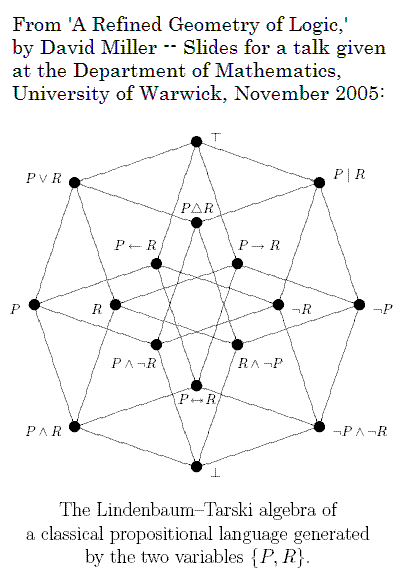
Myth and Story:
The five entries ending
on Jan. 27, 2007
"There is such a thing
as a tesseract."
— Madeleine L'Engle
Comments Off on Friday September 21, 2007
Friday, September 7, 2007
The New York Times online,
Friday, Sept. 7, 2007:
Madeleine L’Engle,
Children’s Writer,
Is Dead
"Madeleine L’Engle, who in writing more than 60 books, including childhood fables, religious meditations and science fiction, weaved emotional tapestries transcending genre and generation, died Thursday [Sept. 6, 2007] in Connecticut. She was 88.
Her death, of natural causes, was announced today by her publisher, Farrar, Straus and Giroux."
More >>
Related material:
Log24 entries of
August 31—
"That is how we travel."

— A Wrinkle in Time,
Chapter 5,
"The Tesseract"
— and of
September 2
(with update of
September 5)–
"There is such a thing
as a tesseract."
— A Wrinkle in Time
Comments Off on Friday September 7, 2007
Friday, August 31, 2007
Being There
"…it would be quite
a long walk
for him if he had to
walk straight across."

Swiftly Mrs. Who brought
her hands… together.
"Now, you see,"
Mrs. Whatsit said,
"he would be there,
without that long trip.
That is how we travel."

— A Wrinkle in Time,
Chapter 5,
"The Tesseract"
Related material:
To Measure the Changes,
Serious Numbers,
and…
Balls of Fury
Comments Off on Friday August 31, 2007
Friday, August 10, 2007
The Ring of Gyges
10:31:32 AM ET
Commentary by Richard Wilhelm
on I Ching Hexagram 32:
“Duration is… not a state of rest, for mere standstill is regression.
Duration is rather the self-contained and therefore self-renewing
movement of an organized, firmly integrated whole, taking place in
accordance with immutable laws and beginning anew at every ending.”
Related material

Jung and the Imago Dei
“Not Being There,”
by Christopher Caldwell,
from next Sunday’s
New York Times Magazine:
| “The chance to try on fresh identities was the great boon that life online was supposed to afford us. Multiuser role-playing games and discussion groups would be venues for living out fantasies. Shielded by anonymity, everyone could now pass a ‘second life’ online as Thor the Motorcycle Sex God or the Sage of Wherever. Some warned, though, that there were other possibilities. The Stanford Internet expert Lawrence Lessig likened online anonymity to the ring of invisibility that surrounds the shepherd Gyges in one of Plato’s dialogues. Under such circumstances, Plato feared, no one is ‘of such an iron nature that he would stand fast in justice.’Time, along with a string of sock-puppet scandals, has proved Lessig and Plato right.” |
“The Boy Who Lived,”
by Christopher Hitchens,
from next Sunday’s
New York Times Book Review:
| On the conclusion of the Harry Potter series:”The toys have been put firmly back in the box, the wand has been folded up, and the conjuror is discreetly accepting payment while the children clamor for fresh entertainments. (I recommend that they graduate to Philip Pullman, whose daemon scheme is finer than any patronus.)” |
I, on the other hand,
recommend Tolkien…
or, for those who are
already familiar with
Tolkien, Plato– to whom
“The Ring of Gyges” may
serve as an introduction.
“It’s all in Plato, all in Plato:
bless me, what do they
teach them at these schools!”
— C. S. Lewis
Comments Off on Friday August 10, 2007
Friday, August 3, 2007
From August 1 —
| SPORTS OF THE TIMES
Restoring the Faith
After Hitting the Bottom
By SELENA ROBERTS
The New York Times
Published: August 1, 2007
What good is a nadir if it’s denied or ignored? What’s the value of reaching the lowest of the low if it can’t buy a cheap epiphany? |
The following image
represents an epiphany
of sorts:
It contains the
“double cross” symbol
of Fritz Leiber’s
Changewar stories;
the “double cross” is
also the traditional
eight-ray symbol of
the evening star–
the planet Venus.
Epiphanies due to Venus
are indeed sometimes
cheap… but not always.
For further details, see
and
Comments Off on Friday August 3, 2007
Comments Off on Friday August 3, 2007
Every Picture
Tells a Story

New York Times online, August 3, 2007
As does Kevin Cullen —
"Tommy Makem was
an Irish soul singer,
and souls don't die."
Cullen's statement
in picture form:
E is for Everlast

Scene from "Million Dollar Baby"
Log24 on July 30, 2005
Comments Off on Friday August 3, 2007
Friday, July 13, 2007
Today’s birthday:
Harrison Ford is 65.

“Three times the concentred
self takes hold, three times
The thrice concentred self,
having possessed
The object, grips it
in savage scrutiny,
Once to make captive,
once to subjugate
Or yield to subjugation,
once to proclaim
The meaning of the capture,
this hard prize,
Fully made, fully apparent,
fully found.”
— “Credences of Summer,” VII,
by Wallace Stevens, from
Transport to Summer (1947) |
“It was Plato who best expressed– who veritably embodied– the tension between the narrative arts and mathematics….
Plato clearly loved them both, both mathematics and poetry. But he approved of mathematics, and heartily, if conflictedly, disapproved of poetry. Engraved above the entrance to his Academy, the first European university, was the admonition: Oudeis ageometretos eiseto. Let none ignorant of geometry enter. This is an expression of high approval indeed, and the symbolism could not have been more perfect, since mathematics was, for Plato, the very gateway for all future knowledge. Mathematics ushers one into the realm of abstraction and universality, grasped only through pure reason. Mathematics is the threshold we cross to pass into the ideal, the truly real.”
Comments Off on Friday July 13, 2007
Friday, July 6, 2007
Comments Off on Friday July 6, 2007
Mearingstone, or:
“Last to the Lost,”
continued from
July 1, 2007
Finnegans Wake 293:
| Vieus Von DVbLIn, ’twas one of dozedeams |
| a darkies ding in dewood) the Turnpike under |
| the Great Ulm (with Mearingstone in Fore |
| ground). 1 Given now ann linch you take enn |
| all. Allow me! And, heaving alljawbreakical |
| expressions out of old Sare Isaac’s 2 universal |
| of specious aristmystic unsaid, A is for Anna |
| like L is for liv. Aha hahah, Ante Ann you’re |
| apt to ape aunty annalive! Dawn gives rise. |
| Lo, lo, lives love! Eve takes fall. La, la, laugh |
| leaves alass! Aiaiaiai, Antiann, we’re last to |
| the lost, Loulou! Tis perfect. Now (lens |
“with Mearingstone in Fore ground….
we’re last to the lost, Loulou!”

Midnight, July 1-2, 2007
Click on image for details.
Comments Off on Friday July 6, 2007
Comments Off on Friday July 6, 2007
Midnight in the Garden
of Good and Evil
continued from
Midsummer Night…
“The voodoo priestess looked across the table at her wealthy client, a man on trial for murder: ‘Now, you know how dead time works. Dead time lasts for one hour– from half an hour before midnight to half an hour after midnight. The half-hour before midnight is for doin’ good. The half-hour after midnight is for doin’ evil….'”
— Glenna Whitley, “Voodoo Justice,”
The New York Times, March 20, 1994

In Other Game News:
“In June, bloggers speculated that
the Xbox 360 return problem was getting so severe that the company was running out of ‘coffins,’ or special return-shipping boxes Microsoft provides to gamers with dead consoles. ‘We’ll make sure we have plenty of boxes to go back and forth,’ Bach said in an interview.”
Comments Off on Friday July 6, 2007
Comments Off on Friday July 6, 2007
Comments Off on Friday July 6, 2007
Friday, June 22, 2007
Comments Off on Friday June 22, 2007
Friday, June 15, 2007
Geometry and Death
(continued from Dec. 11, 2006):
J. G. Ballard on "the architecture of death":
"… a huge system of German fortifications that included the Siegfried line, submarine pens and huge flak towers that threatened the surrounding land like lines of Teutonic knights. Almost all had survived the war and seemed to be waiting for the next one, left behind by a race of warrior scientists obsessed with geometry and death."
— The Guardian, March 20, 2006
From the previous entry, which provided a lesson in geometry related, if only by synchronicity, to the death of Jewish art theorist Rudolf Arnheim:
"We are going to keep doing this until we get it right."
Here is a lesson related, again by synchronicity, to the death of a Christian art scholar of "uncommon erudition, wit, and grace"– Robert R. Wark of the Huntington Library. Wark died on June 8, a date I think of as the feast day of St. Gerard Manley Hopkins, a Jesuit priest-poet of the nineteenth century.
From a Log24 entry on the date of Wark's death–
Samuel Pepys on a musical performance (Diary, Feb. 27, 1668):
"When the Angel comes down"
"When the Angel Comes Down, and the Soul Departs," a webpage on dance in Bali:
"Dance is also a devotion to the Supreme Being."
Julie Taymor, interview:
"I went to Bali to a remote village by a volcanic mountain…."
The above three quotations were intended to supply some background for a link to an entry on Taymor, on what Taymor has called "skewed mirrors," and on a related mathematical concept named, using a term Hopkins coined, "inscapes."
They might form part of an introductory class in mathematics and art given, like the class of the previous entry, in Purgatory.
Wark, who is now, one imagines, in Paradise, needs no such class. He nevertheless might enjoy listening in.
A guest teacher in
the purgatorial class
on mathematics
and art:


"Is it safe?"
Comments Off on Friday June 15, 2007
A Study in
Art Education
Rudolf Arnheim, a student of Gestalt psychology (which, an obituary notes, emphasizes "the perception of forms as organized wholes") was the first Professor of the Psychology of Art at Harvard. He died at 102 on Saturday, June 9, 2007.
The conclusion of yesterday's New York Times obituary of Arnheim:
"… in The New York Times Book Review in 1986, Celia McGee called Professor Arnheim 'the best kind of romantic,' adding, 'His wisdom, his patient explanations and lyrical enthusiasm are those of a teacher.'"
A related quotation:
"And you are teaching them a thing or two about yourself. They are learning that you are the living embodiment of two timeless characterizations of a teacher: 'I say what I mean, and I mean what I say' and 'We are going to keep doing this until we get it right.'"
— Tools for Teaching
Here, yet again, is an illustration that has often appeared in Log24– notably, on the date of Arnheim's death:

Related quotations:
"We have had a gutful of fast art and fast food. What we need more of is slow art: art that holds time as a vase holds water: art that grows out of modes of perception and whose skill and doggedness make you think and feel; art that isn't merely sensational, that doesn't get its message across in 10 seconds, that isn't falsely iconic, that hooks onto something deep-running in our natures. In a word, art that is the very opposite of mass media. For no spiritually authentic art can beat mass media at their own game."
— Robert Hughes, speech of June 2, 2004
"Whether the 3×3 square grid is fast art or slow art, truly or falsely iconic, perhaps depends upon the eye of the beholder."
— Log24, June 5, 2004
If the beholder is Rudolf Arnheim, whom we may now suppose to be viewing the above figure in the afterlife, the 3×3 square is apparently slow art. Consider the following review of his 1982 book The Power of the Center:
"Arnheim deals with the significance of two kinds of visual organization, the concentric arrangement (as exemplified in a bull's-eye target) and the grid (as exemplified in a Cartesian coordinate system)….
It is proposed that the two structures of grid and target are the symbolic vehicles par excellence for two metaphysical/psychological stances. The concentric configuration is the visual/structural equivalent of an egocentric view of the world. The self is the center, and all distances exist in relation to the focal spectator. The concentric arrangement is a hermetic, impregnable pattern suited to conveying the idea of unity and other-worldly completeness. By contrast, the grid structure has no clear center, and suggests an infinite, featureless extension…. Taking these two ideal types of structural scaffold and their symbolic potential (cosmic, egocentric vs. terrestrial, uncentered) as given, Arnheim reveals how their underlying presence organizes works of art."
— Review of Rudolf Arnheim's The Power of the Center: A Study of Composition in the Visual Arts (Univ. of Calif. Press, 1982). Review by David A. Pariser, Studies in Art Education, Vol. 24, No. 3 (1983), pp. 210-213
Arnheim himself says in this book (pp. viii-ix) that "With all its virtues, the framework of verticals and horizontals has one grave defect. It has no center, and therefore it has no way of defining any particular location. Taken by itself, it is an endless expanse in which no one place can be distinguished from the next. This renders it incomplete for any mathematical, scientific, and artistic purpose. For his geometrical analysis, Descartes had to impose a center, the point where a pair of coordinates [sic] crossed. In doing so he borrowed from the other spatial system, the centric and cosmic one."
Students of art theory should, having read the above passages, discuss in what way the 3×3 square embodies both "ideal types of structural scaffold and their symbolic potential."
We may imagine such a discussion in an afterlife art class– in, perhaps, Purgatory rather than Heaven– that now includes Arnheim as well as Ernst Gombrich and Kirk Varnedoe.
Such a class would be one prerequisite for a more advanced course– Finite geometry of the square and cube.
Comments Off on Friday June 15, 2007
Friday, June 8, 2007
The Source
"Beautiful indeed
is the source of truth.
To measure the changes
of time and space
the smartest are nothing." |
Comments Off on Friday June 8, 2007
Friday, May 25, 2007


Square Dance:

This "telling of what
I know" will of course
mean little to those
who, like Emerson,
have refused to learn
through quotations.
For those less obdurate
than Emerson —Harold Bloom
on Wallace Stevens
and Paul Valery's
"Dance and the Soul"–
"Stevens may be playful, yet seriously so, in describing desire, at winter's end, observing not only the emergence of the blue woman of early spring, but seeing also the myosotis, whose other name is 'forget-me-not.' Desire, hearing the calendar hymn, repudiates the negativity of the mind of winter, unable to bear what Valery's Eryximachus had called 'this cold, exact, reasonable, and moderate consideration of human life as it is.' The final form of this realization in Stevens comes in 1950, in The Course of a Particular, in the great monosyllabic line 'One feels the life of that which gives life as it is.' But even Stevens cannot bear that feeling for long. As Eryximachus goes on to say in Dance and the Soul:
A cold and perfect clarity is a poison impossible to combat. The real, in its pure state, stops the heart instantaneously….[…] To a handful of ashes is the past reduced, and the future to a tiny icicle. The soul appears to itself as an empty and measurable form. –Here, then, things as they are come together, limit one another, and are thus chained together in the most rigorous and mortal* fashion…. O Socrates, the universe cannot for one instant endure to be only what it is.
Valery's formula for reimagining the First Idea is, 'The idea introduces into what is, the leaven of what is not.' This 'murderous lucidity' can be cured only by what Valery's Socrates calls 'the intoxication due to act,' particularly Nietzschean or Dionysiac dance, for this will rescue us from the state of the Snow Man, 'the motionless and lucid observer.'" —Wallace Stevens: The Poems of Our Climate
* "la sorte… la plus mortelle":
mortal in the sense
"deadly, lethal"
Other quotations
(from March 28,
the birthday of
Reba McEntire):
Logical Songs

Logical Song I
(Supertramp)
"When I was young, it seemed that
Life was so wonderful, a miracle,
Oh it was beautiful, magical
And all the birds in the trees,
Well they'd be singing so happily,
Joyfully, playfully watching me"
Logical Song II
(Sinatra)
"You make me feel so young,
You make me feel like
Spring has sprung
And every time I see you grin
I'm such a happy in-
dividual….
You and I are
Just like a couple of tots
Running across the meadow
Picking up lots
Of forget-me-nots"
Comments Off on Friday May 25, 2007
Friday, May 18, 2007
“Kids who may never
get out of their town
will be able to see
the world through books.
But I’m talking about
my passion. What’s yours?”
Comments Off on Friday May 18, 2007
Born
on this date:
Pope John Paul II,
Comedian/writer Tina Fey
“It’s just bad luck for me
that in my first attempt
at prime time
I’m going up against the
not up against…

Click on picture
for details.
See also
a serendipitously
embedded cartoon:
Comments Off on Friday May 18, 2007
Devil in the Details
Today’s Harvard Crimson:
“Paul B. Davis ’07-’08, who contributed to a collection of student essays written in 2005 on the purpose and structure of a Harvard education, said that ‘the devil is in the details’….”
From the weblog of Peter Woit:
“The New Yorker keeps its physics theme going this week with cover art that includes a blackboard full of basic equations from quantum mechanics.”

May 21, 2007
New Yorker cover

Detail
The detail suggests
the following
religious images from
Twelfth Night 2003:
|

Devil’s Claws, or
Hourglass Var. 3
|

Yankee Puzzle, or
Hourglass Var. 5
|
“Mercilessly tasteful”
— Andrew Mueller,
review of Suzanne Vega’s
“Songs in Red and Gray“
Comments Off on Friday May 18, 2007
Selections from
The Stephen King Hymnal
Log24, April 21:
Shine on… shine on…
There is work to be done
in the dark before dawn
— Daisy May Erlewine of
Big Rapids, Michigan
And from
the granddaughter of
Nobel-Prize-winning
physicist Max Born:

Comments Off on Friday May 18, 2007
Friday, May 11, 2007
In keeping with the spirit of previous Log24 entries, here is today’s Pennsylvania Lottery commentary. This afternoon’s entry suggests an interpretation of today’s numbers as comments on the new film “Georgia Rule.”
Pennsylvania Lottery today:
Mid-day 384
Evening 952
Today’s mid-day number, 384, is the number of symmetries of the tesseract, a geometric figure illustrated on the cover of the novel The Gameplayers of Zan (see, for instance, May 10, 2007). That novel suggests an interpretation of today’s evening number, 952, as addressing (literally) the subject of Life.
See the address mathforum.org/library/view/952.html.
From that address:
“The Game of Life is played on a field of cells, each of which has eight neighbors (adjacent cells). A cell is either occupied (by an organism) or not. The rules for deriving a generation from the previous one are these: Death – If an occupied cell has 0, 1, 4, 5, 6, 7, or 8 occupied neighbors, the organism dies (0, 1: of loneliness; 4 thru 8: of overcrowding). Survival – If an occupied cell has two or three neighbors, the organism survives to the next generation. Birth – If an unoccupied cell has three occupied neighbors, it becomes occupied.”
Relevance to the film “Georgia Rule”: lonesomeness, generations, and the Lord’s name–
Georgia is a “lonesome and decent widow in wholesome Hull, Idaho…. her framed motto is ‘Count Your Blessings’ and she’s ready to ram [a] soap bar into your mouth if you insult the Lord’s name.” –David Elliott, San Diego Union-Tribune, May 11, 2007
There is not universal agreement on just what is the Lord’s name. Perhaps it includes the number 952.
From The Gameplayers of Zan:
“The Game in the Ship cannot be approached as a job, a vocation, a career, or a recreation. To the contrary, it is Life and Death itself at work there. In the Inner Game, we call the Game Dhum Welur, the Mind of God. And that Mind is a terrible mind, that one may not face directly and remain whole. Some of the forerunners guessed it long ago– first the Hebrews far back in time, others along the way, and they wisely left it alone, left the Arcana alone.”
From Bartlett’s Familiar Quotations:
“Nothing can be produced out of nothing.”
— 10th edition, 1919, page 952
See also “Zen and Language Games“
and “Is Nothing Sacred?“
Comments Off on Friday May 11, 2007
Film Review
“No offense to either of them, but ‘Georgia Rule’ suggests an Ingmar Bergman script as directed by Jerry Lewis. The subject matter is grim, the relationships are gnarled, the worldview is bleak, and, at any given moment, you suspect someone’s going to be hit with a pie.” –John Anderson at Variety.com, May 8, 2007
Sounds perfect to me.
Comments Off on Friday May 11, 2007
Two-Part Invention
"O for a muse of fire,
that would ascend
The brightest heaven
of invention"
— Henry V, Prologue

"The man who lives in contact with what he believes to be a living Church is a man always expecting to meet Plato and Shakespeare to-morrow at breakfast." –G. K. Chesterton,
Orthodoxy, Ch. IX
Comments Off on Friday May 11, 2007
Friday, April 27, 2007
Production Credits:
Thanks to the
Pennsylvania Lottery for
today's suggestion of links
to the dates 9/15 and 6/06–

— and to
Hermann Weyl
for the illustration
from 6/06 (D-Day)
underlying the
following "gold medal"
from 9/15, 2006:

.
Comments Off on Friday April 27, 2007
It’s still the
same old story…
From today’s online
New York Times:
Photo by Carol T. Powers
for The New York Times
Also in today’s online Times:
“Mstislav Rostropovich, a cellist and conductor who was renowned not only as one of the great instrumentalists of the 20th century, but also as an outspoken champion of artistic freedom in Russia during the final decades of the Cold War, died in Moscow today. He was 80 and lived in Paris, with homes in Moscow, St. Petersburg, London and Lausanne, Switzerland….
Mr. Rostropovich… was widely known by his diminutive, Slava (which means glory in Russian)….”
Related material:
I. “Established on 8 November 1943, the Order of Glory (Orden Slavy – Орден Славы) was an Order (decoration) of the Soviet Union…. The Order of Glory… was modelled closely upon the Tsarist Cross of St. George….” —Wikipedia
II. Also on the 8th of November, in 2006 and 2002: Grave Matters and Religious Symbolism at Princeton.
III. “Mr. Rostropovich will be buried in Moscow at the Novodevichy Cemetery, where on Wednesday his friend, Boris Yeltsin, post-Soviet Russia’s first president, was laid to rest.” —New York Times
IV. “A graveyard smash.” –Bobby (Boris) Pickett, who died Wednesday.
Comments Off on Friday April 27, 2007
Friday, April 20, 2007
Speech
In Grand Rapids today…
"… Bush spoke and answered audience questions for nearly 90 minutes inside East Grand Rapids High School in suburban Grand Rapids….
After leaving the school, Bush's motorcade stopped at the Gerald R. Ford Presidential Museum in downtown Grand Rapids, where he stood silently for a few moments after placing a bouquet of white roses at Ford's burial site on the museum grounds. The 38th president, who grew up in Grand Rapids, died Dec. 26 at age 93."
Comments Off on Friday April 20, 2007
Icons
Part I
|
The Library of Congress
Today in History, April 20:
“American sculptor Daniel Chester French was born in Exeter, New Hampshire on April 20, 1850. His colossal seated figure of Abraham Lincoln presides over the Lincoln Memorial.
Reared in Cambridge and Concord, Massachusetts, he was embraced by members of the Transcendentalist community including Ralph Waldo Emerson. Author and fellow Concord resident Louisa May Alcott encouraged young French to pursue a career as an artist. Louisa’s sister, artist May Alcott, was his early teacher.
French studied in Boston and New York prior to receiving his first commission for the 1875 statue The Minute Man. Standing near the North Bridge in Concord, in the Minute Man National Historical Park, this work commemorates events at the North Bridge, the site of ‘the shot heard ’round the world.’ An American icon, images derivative of The Minute Man statue appeared on defense bonds, stamps, and posters during World War II.”
|
|
Saturday, April 14, 2007 4:30 AM
The Sun Also Sets, or…
This Way to
the Egress
Continued from April 12:
“I have only come here
seeking knowledge,
Things they would not
teach me of in college….”
— Synchronicity lyrics
Quoted in Log24,
Time’s Labyrinth continued:
“The sacred axe was used to kill the King. The ritual had been the same since the beginning of time. The game of chess was merely a reenactment. Why hadn’t I recognized it before?”
— Katherine Neville,
The Eight,
Ballantine reprint, 1990,
|
“Know the one about
the Demiurge and the
Abridgment of Hope?”
— Robert Stone,
A Flag for Sunrise,
Knopf, 1981,
the final page
|
Comments Off on Friday April 20, 2007
Friday, April 13, 2007
King Friday XIII
and friend:

| NPR : TV Host Fred Rogers
Mr. ROGERS: And so his birthday, King Friday’s birthday, is always every Friday the 13th. And I hear from people all over the world, you know, it’s a joyous …
www.npr.org/templates/story/story.php?storyId=1576077 |
For further details,
click here.
See also
The Presbyterian Exorcist.
Comments Off on Friday April 13, 2007
Friday, March 30, 2007
Rings
“Philosophers ponder the idea of identity: what it is to give something a name on Monday and have it respond to that name on Friday….”
— Bernard Holland in
The New York Times
Monday, May 20, 1996
The headline for Edward Rothstein’s “Connections” column in The New York Times of Monday, March 26, 2007, was “Texts That Run Rings Around Everyday Linear Logic.”
Here is such a text.
|
The New York Lottery,
Friday, March 30, 2007:
Mid-day 002
Evening 085
|
Continuing yesterday’s lottery meditation, let us examine today’s New York results in the light of Rothstein’s essay. The literary “ring” structure he describes is not immediately apparent in Friday’s numbers, although the mid-day number, 002– which in the I Ching signifies yin, the feminine, receptive principle– might be interpreted as referring to a ring of sorts.
Last night’s reference to last
year’s entry on this date provides,
like the last and first pages of
Finnegans Wake, an example
of literary “ring” structure.
Today’s New York evening number,
85, reinforces this “ring” reference.
For related material, see
an entry for Reba McEntire’s
birthday four years ago.
Comments Off on Friday March 30, 2007
A Year of
Magical Thinking
12:07:57 AM ET
March 30, 2007

See also this date
last year.
Comments Off on Friday March 30, 2007
Friday, March 16, 2007
"Geometry,
Theology,
and Politics:
Context and Consequences of
the Hobbes-Wallis Dispute" (
pdf)
Excerpt:
"We are left to conclude that there was something significant in Hobbes's philosophy that motivated Wallis to engage in the lengthy and vitriolic denunciation of all things Hobbesian.
In point of fact, Wallis made no great secret of his motivations for attacking Hobbes's geometry, and the presence of theological and political motives is well attested in a 1659 letter to Huygens. He wrote:
But regarding the very harsh diatribe against Hobbes, the necessity of the case, and not my manners, led to it. For you see, as I believe, from other of my writings how peacefully I can differ with others and bear those with whom I differ. But this was provoked by our Leviathan (as can be easily gathered fro his other writings, principally those in English), when he attacks with all his might and destroys our universities (and not only ours, but all, both old and new), and especially the clergy and all institutions and all religion. As if the Christian world knew nothing sound or nothing that was not ridiculous in philosophy or religion; and as if it has not understood religion because it does not understand philosophy, nor philosophy because it does not understand mathematics. And so it seemed necessary that now some mathematician, proceeding in the opposite direction, should show how little he understand this mathematics (from which he takes his courage). Nor should we be deterred from this by his arrogance, which we know will vomit poison and filth against us. (Wallis to Huygens, 11 January, 1659; Huygens 1888-1950,* 2: 296-7)
The threats that Hobbes supposedly posed to the universities, the clergy, and all religion are a consequence of his political and theological doctrines. Hobbes's political theory requires that the power of the civil sovereign be absolute and undivided. As a consequence, such institutions as universities and the clergy must submit to the dictates of the sovereign in all matters. This extends, ironically enough, to geometry, since Hobbes notoriously claimed that the sovereign could ban the teaching of the subject and order 'the burning of all books of Geometry' if he should judge geometric principles 'a thing contrary to [his] right of dominion, or to the interest of men that have dominion' (Leviathan (1651) 1.11, 50; English Works** 3: 91). In the area of church government, Hobbes's doctrines are a decisive rejection of the claims of Presbyterianism, which holds that questions of theological doctrine is [sic] to be decided by the elders of the church– the presbytery– without reference to the claims of the sovereign. As a Presbyterian minister, a doctor of divinity, and professor of geometry at Oxford, Wallis found abundant reason to reject this political theory."
* Huygens, Christiaan. 1888-1950. Les oeuvres complètes de Chrisiaan Huygens. Ed. La Société Hollandaise des Sciences. 22 vols. The Hague: Martinus Nijhoff.
** Hobbes, Thomas. [1839-45] 1966. The English Works of Thomas Hobbes of Malmesbury, now First Collected and Edited by Sir William Molesworth. Edited by William Molesworth. 11 vols. Reprint. Aalen, Germany: Scientia Verlag.
Related material:
"But what is it?"
Calvin demanded.
"We know that it's evil,
but what is it?"
"Yyouu hhave ssaidd itt!"
Mrs. Which's voice rang out.
"Itt iss Eevill. Itt iss thee
Ppowers of Ddarrkknesss!"
— A Wrinkle in Time

"After A Wrinkle in Time was finally published, it was pointed out to me that the villain, a naked disembodied brain, was called 'It' because It stands for Intellectual truth as opposed to a truth which involves the whole of us, heart as well as mind. That acronym had never occurred to me. I chose the name It intuitively, because an IT does not have a heart or soul. And I did not understand consciously at the time of writing that the intellect, when it is not informed by the heart, is evil."
See also
"Darkness Visible"
in
ART WARS.
Friday, March 9, 2007
Queen's Gambit

That the topless towers be burnt
And men recall that face,
Move most gently if move you must
In this lonely place.
She thinks, part woman, three parts a child,
That nobody looks; her feet
Practise a tinker shuffle
Picked up on a street.
Like a long-legged fly upon the stream
Her mind moves upon silence.
— W. B. Yeats, "Long-Legged Fly"
This is the epigraph to
the Walter Tevis novel
The Queen's Gambit.
Comments Off on Friday March 9, 2007
Friday, March 2, 2007
|
"I was reading Durant's section on Plato, struggling to understand his theory of the ideal Forms that lay in inviolable perfection out beyond the phantasmagoria. (That was the first, and I think the last, time that I encountered that word.)"
|
Part I: Phantasmagoria


Photo by Phil Bray
Transcendence through spelling:
Richard Gere and Flora Cross
as father and daughter
in the film of Bee Season.
"Every aspect of the alef's
construction has been
Divinely designed
to teach us something."
— Alef– The Difference Between
Exile And Redemption,
by Rabbi Aaron L. Raskin
Related material–
Art Theory for Yom Kippur
and
Log24 entries, Nov. 2005.
Part II: Hunt for the Real
The Alphabet Versus the Goddess:
The Conflict Between Word and Image.
See also the references
to Zelazny's Eye of Cat
in the Nov. 2005 entries
as well as
today's previous entry—
with the Norton Simon motto
"Hunt for the best"– and…

Click for details.
"Photography has always involved waiting…. the photographer is understood to be waiting for the right convergence of subject, lighting and frame before clicking the shutter– waiting for what a master of the genre, Henri Cartier-Bresson, famously called 'the decisive moment.' Lee Friedlander, another great street photographer, compared this anticipatory state to the hunting alertness of a 'one-eyed cat.' The metaphor of the hunt has seeped into the essential language of photography."
— Arthur Lubow in The New York Times, Feb. 25, 2007
Comments Off on Friday March 2, 2007
Today's birthdays:
Jennifer Jones,
film star and arts patron;
Tom Wolfe, author of
The Painted Word.
"Hunt for the best."
— Norton Simon

Cover detail,
soundtrack recording
of the Jennifer Jones film
"Angel, Angel, Down We Go"
The girl's left eye in the above
portrait illustrates a remark
in yesterday's New York Times
on a figure in a painting:
"His head recedes into shadow, so you barely see his face. But a tiny fleck of white in his eye, a light that kindles his reawakening, brings him to life. It’s what Roland Barthes, the French critic, liked to call a punctum, the spot, marking time, that burns an image into memory."
(This remark, by Michael Kimmelman,
comes with a headline–
Lights! Darks! Action! Cut!
Maestro of Mise-en-Scène
— that seems to have been inspired
by Tom Wolfe's prose style.)
For further details, see
Barthes's Punctum,
by Michael Fried.
Comments Off on Friday March 2, 2007
Friday, February 16, 2007
“The much-borrowed Brown formula involves some very specific things. The name of a great artist, artifact or historical figure must be in the book’s story, not to mention on its cover. The narrative must start in the present day with a bizarre killing, then use that killing as a reason to investigate the past. And the past must yield a secret so big, so stunning, so saber-rattling that all of civilization may be changed by it. Probably not for the better.
This formula is neatly summarized….”
Cover illustration
for
The Judas Seat:
The Narrative:
The Secret:
Part I
“Little ‘Jack’ Horner was actually Thomas Horner, steward to the Abbot of Glastonbury during the reign of King Henry VIII…. Always keen to raise fresh funds, Henry had shown a interest in Glastonbury (and other abbeys). Hoping to appease the royal appetite, the nervous Abbot, Richard Whiting, allegedly sent Thomas Horner to the King with a special gift. This was a pie containing the title deeds to twelve manor houses in the hope that these would deflect the King from acquiring Glastonbury Abbey. On his way to London, the not so loyal courier Horner apparently stuck his thumb into the pie and extracted the deeds for Mells Manor, a plum piece of real estate. The attempted bribe failed and the dissolution of the monasteries (including Glastonbury) went ahead from 1536 to 1540. Richard Whiting was subsequently executed, but the Horner family kept the house, so the moral of this one is: treachery and greed pay off, but bribery is a bad idea.” –Chris Roberts, Heavy Words Lightly Thrown: The Reason Behind the Rhyme
“In medieval romance, the grail was said to have been brought to
Glastonbury in Britain by Joseph of Arimathea and his followers. In the time of Arthur, the quest for the Grail was the highest spiritual pursuit.” —
The Camelot Project
Part III
The Log24 entry for the date–
February 13, 2007–
of the above Bible scholar’s death,
and the three entries preceding it:
“And what the dead had no speech for, when living,
they can tell you, being dead:
the communication of the dead is tongued with fire
beyond the language of the living.”
— T. S. Eliot, Four Quartets
Comments Off on Friday February 16, 2007
Friday, February 9, 2007
The Romance
of Mathematics

On teachers of “core mathematics classes for non-majors, mathematics appreciation courses, and other lower level courses”:
“We are accustomed to being marginalized by society, our political leaders, and even our college and university administrations who often fail to see the scholarship involved in teaching. But how dare the Notices ignore us?”
— Complaint in the March 2007 Notices of the American Mathematical Society by “Julian F. Fleron, Ph.D., Professor of Mathematics, Westfield State College”
Let us examine Fleron’s alleged scholarship:
“Before each of my classes I put a quote on the board. The quote is either related to the mathematics we are studying, related to mathematics more generally, or related to learning and education. Student response has been tremendous, and I have found it to be very beneficial.” —Julian Fleron
Fleron offers us, without specifying an exact source, the following quotation:
“Mighty is geometry; joined with art, resistless. Euripides.“
A search for the source leads us to a quotation from 1914, a time when teaching did sometimes involve scholarship:
“1568. Mighty are numbers, joined with art resistless. EURIPIDES. Hecuba, Line 884.”
— Memorabilia Mathematica, by Robert Edouard Moritz, The Macmillan Company, 1914
But even in 1914, the scholarship, if one can call it that, was misleading. The 1914 quotation (which at least refers accurately to numbers, not geometry) is blatantly taken out of context to imply a connection with the mathematical art of number theory (as practiced by, say, G. H. Hardy) that is certainly not found in Euripides. The details:
HECUBA Sheltered beneath these tents is a host of Trojan women.
AGAMEMNON Dost mean the captives, the booty of the Hellenes?
HECUBA With their help will I punish my murderous foe.
AGAMEMNON How are women to master men?
HECUBA Numbers are a fearful thing, and joined to craft a desperate foe.
AGAMEMNON True; still I have a mean opinion of the female race.
This dialogue may have some relevance to today’s rumored selection at Harvard of a woman (Drew Gilpin Faust as Hecuba) to replace a man (Larry Summers as Agamemnon) in the president’s office. The dialogue’s only relevance to mathematics is in its reference to the perennial conflict between the sexes. Perhaps that conflict will serve to illustrate the title given by the Notices to Fleron’s complaint: “Teaching the Romance of Mathematics.”
Comments Off on Friday February 9, 2007
Friday, February 2, 2007
Comments Off on Friday February 2, 2007
Friday, January 26, 2007
IT
"… at last she realized
what the Thing on the dais was.
IT was a brain.
A disembodied brain…."
"There could not be an objective test
that distinguished a clever robot
from a really conscious person."
— Daniel Dennett in TIME magazine,
issue dated Mon., Jan. 29, 2007
"If telepathy is admitted
it will be necessary
to tighten our test up."
Amen.
Friday, January 19, 2007
Triple Kiss

| I bent to kiss the lovely Maid, |
|
| And found a threefold kiss return’d. |
— “
The Crystal Cabinet“
The above illustration of a classic Blake verse is for
Anthony Daniels, a critic of Ezra Pound. The illustration may appeal to Daniels, since it is, like the persona presented by Daniels himself, petit-bourgeois and vulgar.
It was inspired by today’s two previous entries and by Daniels’s remarks, in this month’s New Criterion magazine, on Ezra Pound:
“Of his poetry I shall say nothing: not being fluent in Greek, Chinese, Italian, Farsi, and so forth, I do not feel much qualified to comment on it…. I shall merely confess to a petit-bourgeois partiality for comprehensibility and to what Pound himself called, in the nearest he ever came to a mea culpa with regard to his own ferocious anti-Semitism at a time of genocide, ‘a vulgar suburban prejudice’ against those who suppose that their thoughts are so profound that they justify a lifetime of exegesis if ever their meaning is to be even so much as glimpsed through a glass darkly.”
— “Pound’s Depreciation“
Daniels, here posing as a vulgar suburban petit-bourgeois, is unwilling to examine Pound’s poetry even “through a glass darkly.” This echoes the petit-bourgeois, but not vulgar, “confession” of today’s previous entry:
“I didn’t expect much–didn’t look out the window
At school more diligent than able–docile stable”
— “A Life,” by Zbigniew Herbert
Pound, editor of T. S. Eliot’s “The Waste Land”– published in the first issue of the original Criterion magazine in 1922– might refer Daniels to the ghost of Guy Davenport:
“‘The architectonics of a narrative,’ Davenport says, ‘are emphasized and given a role to play in dramatic effect when novelists become Cubists; that is, when they see the possibilities of making a hieroglyph, a coherent symbol, an ideogram of the total work. A symbol comes into being when an artist sees that it is the only way to get all the meaning in.’….
In his study of The Cantos, Davenport defines the Poundian ideogram as ‘a grammar of images, emblems, and symbols, rather than a grammar of logical sequence…. An idea unifies, dominates, and controls the particulars that make the ideogram’…. He insists on the intelligibility of this method: ‘The components of an ideogram cohere as particles in a magnetic field, independent of each other but not of the pattern in which they figure.'”
— Andre Furlani, “‘When Novelists Become Cubists’: The Prose Ideograms of Guy Davenport“
Comments Off on Friday January 19, 2007
Semantic Transparency
"… semantic transparency … would allow disparate systems to share some understanding of the actual concepts that are represented…"
— IBM Developer Works on October 7, 2003
From Wikipedia's
"Upper Ontology"
and
Epiphany 2007:
"There is no neutral ground
that can serve as
a means of translating between
specialized (lower) ontologies."
There is, however,
"the field of reason"–
the 3×3 grid:

Click on grid
for details.
From a Log24 entry of January 7, 2007:
"One of the primary critiques of modernism that Learning from Las Vegas was engaged in, as Frederic [sic] Jameson clearly noted, was the dialectic between inside and outside and the assumption that the outside expressed the interior. Let's call this the modernist drive for 'expressive transparency.'"
— Aron Vinegar of Ohio State U., "Skepticism and the Ordinary: From Burnt Norton to Las Vegas"
From this week's New Yorker (issue dated Jan. 22, 2007)–
"A Life," by Zbigniew Herbert
(translated from the Polish by Alissa Vales):
I was a quiet boy a little sleepy and–amazingly–
unlike my peers–who were fond of adventures–
I didn't expect much–didn't look out the window
At school more diligent than able–docile stable
For the rest of the poem, click here.
From the Wikipedia article on Zbigniew Herbert:
"In modern poetry, Herbert advocated semantic transparence. In a talk given at a conference organized by the journal Odra he said: 'So not having pretensions to infallibility, but stating only my predilections, I would like to say that in contemporary poetry the poems that appeal to me the most are those in which I discern something I would call a quality of semantic transparency (a term borrowed from Husserl's logic). This semantic transparency is the characteristic of a sign consisting in this: that during the time when the sign is used, attention is directed towards the object denoted, and the sign itself does not hold the attention. The word is a window onto reality.'"
(Wikipedia cites as the source–
Herbert's talk at the meeting "Poet in face of the present day," organized by the "Odra" journal. Print version: Preface to: Zbigniew Herbert "Poezje," Panstwowy Instytut Wydawniczy, Warszawa 1998, ISBN 83-06-02667-5.)
Fom Nabokov's Transparent Things (pdf):
"Its ultimate vision was the incandescence of a book or a box grown completely transparent and hollow. This is, I believe, it: not the crude anguish of physical death but the incomparable pangs of the mysterious mental maneuver needed to pass from one state of being to another. Easy, you know, does it, son."
Related material:
Confession

Comments Off on Friday January 19, 2007
Twisted Honeycomb
From a review in today’s New York Times by Janet Maslin of Norman Mailer’s new novel, The Castle in the Forest:
“The wise beekeeper does not wear dark clothing, lest it pick up light-colored pollen. Italian bees are gentler and more chic than the Austrian variety. The mating box, capping fork and spur-wheel embedder are essential tools for apiculture. And all power in the beehive rests with a treacherous but fragrant bitch.
All this bee talk crops up in ‘The Castle in the Forest,’ Norman Mailer’s zzzzz-filled new novel about Adolf Hitler’s tender, metaphor-fraught and (in this book’s view) literally bedeviled boyhood. So it is not a stretch for the book’s jacket copy to insist that ‘now, on the eve of his 84th birthday, Norman Mailer may well be saying more than he ever has before.’ More about beekeeping– absolutely.”
Comments Off on Friday January 19, 2007
Friday, January 5, 2007
In Twelfth Night, the character Feste
“.. seems to be the wisest person within all the characters in the comedy. Viola remarks this by saying ‘This fellow’s wise enough to play the fool’…. Since Feste is a licensed fool, his main role in Twelfth Night is to speak the truth. This is where the humor lies….”
— Field-of-Themes.com
Comments Off on Friday January 5, 2007
A Goldberg Variation

Final page of The New York Times Book Review, issue dated January 7, 2007:
On using speech-recognition software to dictate a book:
"Writing is the act of accepting the huge shortfall between the story in the mind and what hits the page. 'From your lips to God's ears,' goes the old Yiddish wish. The writer, by contrast, tries to read God's lips and pass along the words…. And for that, an interface will never be clean or invisible enough for us to get the passage right….
Everthing we write– through any medium– is lost in translation. But something new is always found again, in their eager years. In Derrida's fears. Make that: in the reader's ears."
— Richard Powers (author of The Gold Bug Variations)
Found in translation:

Click on picture
for details.
Comments Off on Friday January 5, 2007
Friday, December 29, 2006
Tools
of Christ Church
"For every kind of vampire,
there is a kind of cross."
— Thomas Pynchon

Click on picture for details.
Today is the feast
of St. Thomas Becket.
In his honor, a meditation
on tools and causation:
"Lewis Wolpert, an eminent developmental biologist at University College London, has just published
Six Impossible Things Before Breakfast, a pleasant, though rambling, look at the biological basis of belief. While the book focuses on our ability to form causal beliefs about everyday matters (the wind moved the trees, for example), it spends considerable time on the origins of religious and moral beliefs. Wolpert defends the unusual idea that causal thinking is an adaptation required for tool-making. Religious beliefs can thus be seen as
an odd extension of causal thinking about technology to more mysterious matters. Only a species that can reason causally could assert that 'this storm was sent by God because we sinned.' While Wolpert's attitude toward religion is tolerant, he's an atheist who seems to find religion more puzzling than absorbing."
— Review by H. Allen Orr in
The New York Review of Books,
Vol. 54, No. 1, January 11, 2007
"An odd extension"–
Wolpert's title is, of course,
from Lewis Carroll.
Related material:
"It's a poor sort of memory
that only works backwards."
— Through the Looking-Glass
An event at the Kennedy Center
broadcast on
December 26, 2006
(St. Steven's Day):
"Conductor John Williams, a 2004 Honoree, says, 'Steven, sharing our 34-year collaboration has been a great privilege for me. It's been an inspiration to watch you dream your dreams, nurture them and make them grow. And, in the process, entertain and edify billions of people around the world. Tonight we'd like to salute you, musically, with a piece that expresses that spirit beautifully … It was written by Leonard Bernstein, a 1980 Kennedy Center Honoree who was, incidentally, the first composer to be performed in this hall.' Backed by The United States Army Chorus and The Choral Arts Society, soprano Harolyn Blackwell and tenor Gregory Turay sing the closing number for Spielberg's tribute and the gala itself. It's the finale to the opera 'Candide,' 'Make Our Garden Grow,' and Williams conducts."
— CBS press release
See also the following,
from the conclusion to
"Mathematics and Narrative"
(Log24, Aug. 22, 2005):

"At times, bullshit can
only be countered
with superior bullshit."
— Norman Mailer
Many Worlds and Possible Worlds in Literature and Art, in Wikipedia:
"The concept of possible worlds dates back to at least Leibniz who in his Théodicée tries to justify the apparent imperfections of the world by claiming that it is optimal among all possible worlds. Voltaire satirized this view in his picaresque novel Candide….
Borges' seminal short story El jardín de senderos que se bifurcan ("The Garden of Forking Paths") is an early example of many worlds in fiction."
"Il faut cultiver notre jardin."
— Voltaire
"We symbolize
logical necessity
with the box ( )
)
and logical possibility
with the diamond ( )."
)."
— Keith Allen Korcz

"The possibilia that exist,
and out of which
the Universe arose,
are located in
a necessary being…."
— Michael Sudduth,
Notes on
God, Chance, and Necessity
by Keith Ward,
Regius Professor of Divinity,
Christ Church College, Oxford
(the home of Lewis Carroll)
For further details,
click on the
Christ Church diamond.
Comments Off on Friday December 29, 2006
Friday, December 15, 2006
Putting the
X
in Xmas
“It’s all in Plato, all in Plato;
bless me, what
do they
teach them at these schools?”
—
C. S. Lewis
Apparently they teach them
nihilism,
empty rhetoric, and
despair, as reflected in Borges, Baudrillard, and Benjamin, according to the art review below from today’s
New York Times. Let us hope that
the late Peter Boyle, who died on Tuesday, Dec. 12, has moved beyond these now– singing “Heaven, I’m in Heaven,” rather than “Puttin’ on the Ritz.”
|
“In one of Jorge Luis Borges’s best-known short stories, ‘Pierre Menard, Author of the Quixote,’ a 20th-century French writer sets out to compose a verbatim copy of Cervantes’s 17th-century masterpiece simply because he thinks he can, originality perhaps not being all it’s cracked up to be.
He manages two chapters word for word, a spontaneous duplicate that Borges’s narrator finds to be ‘infinitely richer’ than the original because it contains all manner of new meanings and inflections, wrenched as it is from its proper time and context….”
[An artist’s version of a newspaper is]….
“a drawing of a copy of a version of what happened, holding a mirror up to nature with a refraction or two in between. In a way that mixes Borges with a dollop of Jean Baudrillard and a heavy helping of Walter Benjamin, the work also upends ideas….” |
The Work:
Pennsylvania Lottery
December 2006
Daily Number (Day):
Borges,
Menard’s Quixote, and
The Harvard Crimson |
Mon., Dec. 11:
133 |
Baudrillard
(via a white Matrix) |
Sun., Dec. 10:
569 |
Benjamin and
a black view of life in
“The Garden of Allah” |
Sat., Dec. 9:
602 |
Click on numbers
for commentary.
“There is nothing new under the sun. With the death of the real, or rather with its (re)surrection, hyperreality both emerges and is already always reproducing itself.” –Jean Baudrillard
Related material:
Comments Off on Friday December 15, 2006
Friday, December 8, 2006
An Instance
of the Fingerpost
"CRUCIAL (from Lat. crux, a cross),
that which has the form of a cross…
From Francis Bacon's expression
instantia crucis (taken, as he says, from
the finger-post or crux at cross-roads)"
"For every kind of vampire,
— Gravity's Rainbow
There is such a thing
as a tesseract.
Related material:
The Gameplayers of Zan
"Appropriating the Button-molder's
words to Peer Gynt, he would say,
'We'll meet at the next crossroads…
and then we'll see–
I won't say more.'"
Comments Off on Friday December 8, 2006
Friday, November 24, 2006
Galois’s Window:
Geometry
from Point
to Hyperspace
by Steven H. Cullinane
Euclid is “the most famous
geometer ever known
and for good reason:
for millennia it has been
his window
that people first look through
when they view geometry.”
— Euclid’s Window:
The Story of Geometry
from Parallel Lines
to Hyperspace,
by Leonard Mlodinow
“…the source of
all great mathematics
is the special case,
the concrete example.
It is frequent in mathematics
that every instance of a
concept of seemingly
great generality is
in essence the same as
a small and concrete
special case.”
— Paul Halmos in
I Want To Be a Mathematician
Euclid’s geometry deals with affine
spaces of 1, 2, and 3 dimensions
definable over the field
of real numbers.
Each of these spaces
has infinitely many points.
Some simpler spaces are those
defined over a finite field–
i.e., a “Galois” field–
for instance, the field
which has only two
elements, 0 and 1, with
addition and multiplication
as follows:
We may picture the smallest
affine spaces over this simplest
field by using square or cubic
cells as “points”:

From these five finite spaces,
we may, in accordance with
Halmos’s advice,
select as “a small and
concrete special case”
the 4-point affine plane,
which we may call

Galois’s Window.
The interior lines of the picture
are by no means irrelevant to
the space’s structure, as may be
seen by examining the cases of
the above Galois affine 3-space
and Galois affine hyperplane
in greater detail.
For more on these cases, see
The Eightfold Cube,
Finite Relativity,
The Smallest Projective Space,
Latin-Square Geometry, and
Geometry of the 4×4 Square.
(These documents assume that
the reader is familar with the
distinction between affine and
projective geometry.)
These 8- and 16-point spaces
may be used to
illustrate the action of Klein’s
simple group of order 168
and the action of
a subgroup of 322,560 elements
within the large Mathieu group.
The view from Galois’s window
also includes aspects of
quantum information theory.
For links to some papers
in this area, see
Elements of Finite Geometry.
Comments Off on Friday November 24, 2006
Friday, November 10, 2006
Today's
numbers:
![PA lottery Nov. 10, 2006: Mid-day 588, Evening 004]()
Today is the day that
Stanley found Livingstone.

Click on picture for details.
"Stone 588,
I presume?"
Related material:
This afternoon's entry
on color symmetry
and

Click on picture for details.
See, too, the following from
a Log24 entry of last Monday–
"To von Eschenbach, the Grail
was never really a material cup,
but a jewel like the
jewel in the lotus,
a symbol of enlightenment,
of something intangible
and always beyond reach."
— Arcadian Functor
"Philosophers ponder the idea
of identity: what it is to give
something a name
on Monday
and have it respond
to that name
on Friday…."
— Bernard Holland in
The New York Times
Monday, May 20, 1996
Comments Off on Friday November 10, 2006
Veterans  Jack Palance as Jesus Raza, Lee Marvin as Henry “Rico” Fardan in “The Professionals” (1966). Both Palance and Marvin were World War II veterans. Palance died today.
Jack Palance as Jesus Raza, Lee Marvin as Henry “Rico” Fardan in “The Professionals” (1966). Both Palance and Marvin were World War II veterans. Palance died today.
Comments Off on Friday November 10, 2006
Livingstone
On this date:
In 1871, journalist-explorer Henry M. Stanley found Scottish missionary David Livingstone, who had not been heard from for years, near Lake Tanganyika in central Africa.
— AP “Today in History,” Nov. 10
“Counter-change is
Comments Off on Friday November 10, 2006
Friday, October 27, 2006
Shem the Penman
Excerpt from Harvard Magazine:
“The people who intermediate between lunatics and the world used to be called alienists; the go-betweens for mathematicians are called teachers. Many a student may rightly have wondered if the terms shouldn’t be reversed.”
— Review of The Magic of Numbers, a book by Benedict H. Gross, Leverett Professor of Mathematics and Dean of Harvard College
For the full review, see
On Mathematical Imagination–
Harvard Magazine
(January-February 2004):
… part of a New Instauration
that will bring mathematics, at last, …
Wednesday, December 31, 2003,
7:00pm EST • 26.1k •
http://www.harvardmagazine.com/
on-line/010442.html
From today’s Harvard Crimson:
Leverett resident in
critical condition, ‘improving’
Published On Friday,
October 27, 2006 4:35 AM
Crimson Staff Writer
An undergraduate fell from a ninth-floor window in Leverett House Tower F yesterday morning, suffering serious injuries, according to University officials.
The 25-year-old student, Steven R. Snyder ’04-’08, was in critical condition at Beth Israel Deaconess Medical Center as of yesterday….
Rooms in the Leverett Towers typically have one large window that doesn’t open and at least one smaller window that can be cranked open. The smaller windows are each about two feet wide and four feet high….
Snyder– who is from Avon Lake, Ohio– is a mathematics concentrator….
Dean of the College Benedict H. Gross ’71, in an e-mail sent to undergraduates at about 12:30 p.m. yesterday, said a student “apparently fell from a window,” and an “investigation is underway.”
“A time like this can be very difficult for everyone, especially those who live in Leverett. I would like to remind all students and staff that there are many people on campus who can help you through this difficult time,” Gross added. He directed students to the University’s Mental Health Services and the Bureau of Study Counsel. |
Related material:
The Crimson Passion,
the previous entry,
Hall of Shem,
and the link, in the
Ash Wednesday, 2006,
entry, Deaconess,

to The House of God,
a novel by
Samuel Shem.
Shem is the pen-name
of Stephen J. Bergman,
Clinical Instructor in Psychiatry
at Harvard Medical School.
Comments Off on Friday October 27, 2006
Friday, October 20, 2006
“Halmos”
For one definition, see
Tombstone (typography) at Wikipedia.
A halmos, according to
the Wikipedia definition:

Click on the halmos
for further details from
today’s New York Times.
Comments Off on Friday October 20, 2006
Friday, October 13, 2006
To a
Dark Lady*
“Something inside
is telling me that
I’ve got your secret.
Are you still listening?
Fear is the lock, and laughter
the key to your heart….
… you are what you are.
And you make it hard,
and you make it hard….”
— Stephen Stills Songbook
* Suggested by…
(1) A Harvard Crimson opinion piece
of Oct. 12, “A Psychosexual Sham”
(2) Remarks on the sin of masturbation
(Ask Father Hardon)
(3) Shem was a sham…. (FW I.7, 170).
See also the Crimson on Jack Nicholson
and Log24 on a food joke.
“Ours is a very gutsy religion, Cullinane.”
— The Source, by James A. Michener
Tell it to James Joyce.
Comments Off on Friday October 13, 2006
Friday, October 6, 2006
Incipit
For the Amish Schoolchildren
“Philosophers ponder the idea of identity: what it is to give something a name on Monday and have it respond to that name on Friday….”
— Bernard Holland in
The New York Times
Monday, May 20, 1996
From Log24
on Monday, Oct. 2, 2006:
“Logos and logic, crystal hypothesis,
Incipit and a form to speak the word
And every latent double in the word….”
— Wallace Stevens,
“Notes Toward a Supreme Fiction“
Pennsylvania lottery,
mid-day on Friday, Oct. 6, 2006:
“331”
Related material: Log24, 3/31, 2006.
Comments Off on Friday October 6, 2006
Comments Off on Friday October 6, 2006
Friday, September 29, 2006
Values
for the High Holy Days
(Rosh Hashanah began at sundown September 22; Yom Kippur begins at sundown October 1. —holidays.net)
Mark Finkelstein today:
"Today comes more evidence of the left's painful struggle to deal with its diminished standing and repeated rejection at the polls. In the subscription-required Why Voters Like Values, [New York] Times columnist Judith Warner claims that "the Christian right's ability to stir voter passions is based not on values, but on psychology." Warner describes having bravely gone inside the belly of the conservative beast, recently attending a Values Voters Summit in DC, and declaring it "imbued with so much intolerance and hate." This is presumably in contrast with liberal love-ins, where Bush & Co. are regularly depicted as liars, murderers, Hitlers, etc.
She later describes a schadenfreude-provoking scene of the day after Kerry's 2004 defeat, picking through the rubble with Harvard psychology professor emeritus, Jerome Kagan, who tried to console Warner and presumably himself. As she describes it:
"Our conversation drifted to the Republicans' 'values' [note scare quotes] agenda, and Kagan's belief that values sell because they're an antidote to the endemic mental health problem of our time: depression.
"'Humans demand that there be a clear right and wrong,' he said. 'You've got to believe that the track you've taken is the right track. You get depressed if you're not certain as to what it is you're supposed to be doing or what's right and wrong in the world."
"People need to divide the world into good and evil, us and them, Kagan continued. To do otherwise– to entertain the possibility that life is not black and white, but variously shaded in gray– is perhaps more honest, rational and decent. But it's also, psychically, a recipe for disaster."
Got it? Liberalism is "more honest, rational and decent" than conservativism, but that's just not what the benighted public wants. They're looking for political Prozac, a Manichean worldview they can cling to, and that's what conservatism cunningly offers.
Less controversial values are provided by yesterday evening's Pennsylvania lottery— namely, the values 4, 5, and 6.
For a discussion of these values under the guise of musical intervals, see Professor Kagan again, in a paper (pdf) he wrote with Marcel R. Zentner, "Infants' Perception of Consonance and Dissonance in Music" (Infant Behavior & Development, Vol. 21, No. 3, 1998):
Adults judge as most consonant either the octave (difference of 12 semitones) [or the unison, difference of 0 semitones], the fifth (7 semitones), or the major third (4 semitones).
Illustration (see also yesterday evening):
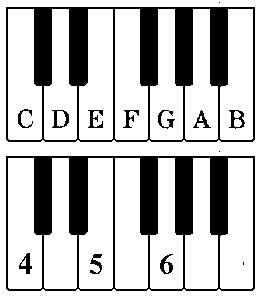
Notes and frequency ratios
The paper discusses consonant intervals
as an example of alleged
"perceptual universals."
Related material on universals
suitable for today, the Feast of
St. Michael and All Angels:
Shining Forth and
Midsummer Eve's Dream.
The material in Shining Forth
is also related, tangentially, to the
following presentation of the
Warner "values" essay
in today's online New York Times:

The above three Times items,
taken together, suggest that
those in search of "values"
should consult Betty Suarez:

Click on picture for further details.
Comments Off on Friday September 29, 2006
Friday, September 22, 2006
The Grace of Accuracy
In this morning's New York Times:

The Times describes yesterday's
memorial to Cy Feuer,
producer, notably, of the 1972
film version of "Cabaret"–
"Joel Grey sang 'Willkommen….'"
Related material:
a Log24 entry
from October 29, 2002–
|
Our Judeo-Christian Heritage:
Two Sides of the Same Coin
|
— and Echoes
(August 11, 2006).
The New York Times on Sven Nykvist,
a cinematographer who died on Wednesday:
"In his films, especially those with Mr. Bergman, light assumed a metaphysical dimension that went beyond mood. It distilled and deepened the feelings of torment and spiritual separation that afflicted Bergman characters." –Stephen Holden
"Pray for the grace of accuracy
Vermeer gave to the sun's illumination…."
— "Epilogue," by Robert Lowell,
in Day by Day, 1977
For further remarks on light,
see Shining Forth as well as
Tombstone (from May 17,
the date of Feuer's death).
Comments Off on Friday September 22, 2006
Friday, September 15, 2006
"In September [2005], she had a private audience with Pope Benedict XVI at Castel Gandolfo, his summer residence outside Rome. She had criticized John Paul II for making overtures to Muslims, and for not condemning terrorism heartily enough, but she has hopes for Joseph Ratzinger. (The meeting was something of a scandal in Italy, since Fallaci has always said that she is an atheist; more recently, she has called herself a 'Christian atheist,' out of respect for Italy's Catholic tradition.) Last December, the Italian government presented her with a gold medal for 'cultural achievement.'"
Comments Off on Friday September 15, 2006
Friday, September 1, 2006
Dirty Business
“Some friends of mine
are in this band.”
— David Auburn, Proof

“And if the band you’re in
starts playing different tunes
I’ll see you on
the dark side of the moon.”
— Quoted in Log24 on the
July 20, 2005, anniversary
of the 1969 Apollo 11
“one small step” moon landing
Last night’s entry on Glenn Ford, freemasonry, and the business of narrative leads to the following meditation.
This morning’s New York Times obituary of the Apollo 11 launch director brings back memories of Dean Martin’s classic refrain “when the moon hits your eye like a big pizza pie….” This in turn is a reminder of one of the great subtitles– Dino: Living High in the Dirty Business of Dreams (by Nick Tosches, published by Secker & Warburg on November 9, 1992). I respect the launch director, Rocco A. Petrone, who later headed the successful recovery of Apollo 13 (and also headed the entire Apollo program), but I also greatly respect Nick Tosches as a guide to the dark side of humanity. Secular humanism and the religion of scientism are all very well as cheerleaders for physics, but Tosches and the Roman Catholic Church have a much better understanding of human nature and original sin.
Comments Off on Friday September 1, 2006
Friday, August 25, 2006
Today's birthday:
Sean Connery
"Poetry is an illumination of a surface,
the movement of a self in the rock."
— Wallace Stevens, introduction to
The Necessary Angel, 1951
Welcome.

First edition, 1936
Comments Off on Friday August 25, 2006
Friday, August 11, 2006
Under God
Adapted from August 7:

“Saomai, the Vietnamese name
for the planet Venus, was the
eighth major storm to hit China
during an unusually violent
typhoon season.”
— AP online tonight
|
Memorable Quotes
Lieutenant Daniel Taylor:
Where the Hell is
this God of yours?
Forrest Gump:
[narrating]
It’s funny Lieutenant Dan
said that, ’cause right then,
God showed up.
|
Wind and thunder:
the image of Increase.
Thus the superior man:
If he sees good,
he imitates it;
If he has faults,
he rids himself of them.
— Hexagram 42
For further details,
see recent entries
(August 7-11)
and also
Symmetry and Change
In the Dreamtime.
|
Update of 1:06 AM ET
from KHYI:
Mercy Now
Written by Mary Gauthier
My father could use a little mercy now
The fruits of his labor
Fall and rot slowly on the ground
His work is almost over
It won’t be long and he won’t be around
I love my father, and he could use some mercy now
My brother could use a little mercy now
He’s a stranger to freedom
He’s shackled to his fears and doubts
The pain that he lives in is
Almost more than living will allow
I love my brother, and he could use some mercy now
My church and my country could use a little mercy now
As they sink into a poisoned pit
That’s going to take forever to climb out
They carry the weight of the faithful
Who follow them down
I love my church and country, and they could use some mercy now
Every living thing could use a little mercy now
Only the hand of grace can end the race
Towards another mushroom cloud
People in power, well
They’ll do anything to keep their crown
I love life, and life itself could use some mercy now
Yeah, we all could use a little mercy now
I know we don’t deserve it
But we need it anyhow
We hang in the balance
Dangle ‘tween hell and hallowed ground
Every single one of us could use some mercy now
Every single one of us could use some mercy now
Every single one of us could use some mercy now
|
Comments Off on Friday August 11, 2006
Comments Off on Friday August 11, 2006
Friday, August 4, 2006
Comments Off on Friday August 4, 2006
The Double Cross
The following symbol
has been associated
with the date
December 1:

Click on the symbol
for details.
That date is connected
to today’s date since
Dec. 1 is the feast—
i.e., the deathday– of
a saint of mathematics:
G. H. Hardy, author of
the classic
A Mathematician’s Apology
(online, pdf, 52 pp. ),
while today is the birthday
of three less saintly
mathematical figures:
Sir William Rowan Hamilton,
For these birthdays, here is
a more cheerful version of
the above symbol:

For the significance of
this version, see
Chinese Jar Revisited
(Log24, June 27, 2006),
a memorial to mathematician
Irving Kaplansky
(student of Mac Lane).
This version may be regarded
as a box containing the
cross of St. Andrew.
If we add a Greek cross
(equal-armed) to the box,
we obtain the “spider,”
or “double cross,” figure

of my favorite mythology:
Fritz Leiber’s Changewar.
Comments Off on Friday August 4, 2006
The Presbyterian Exorcist
In memory of
Charles W. Dunn, Harvard Professor of Celtic Languages and Literatures Emeritus, who died July 24, 2006, at Beth Israel Deaconess Medical Center in Boston at the age of 90. Dunn was master of Quincy House from 1966 to 1981.
“‘He brought a taste of Scotland to the House, initiating an annual rite of exorcism in September to cleanse the place of evil spirits, during which a Scots bagpiper led a march of residents around the courtyard and Charles intoned an incantation while waving a large baton, banishing ghosts and other harbingers of ill will. His leadership was at its best during magnificent evenings in the Master’s lodging when he taught guests Scottish country dances. Students were fond of him, and he of them.’
Born in Arbuthnott, Scotland, the son of a Presbyterian minister, Dunn began his schooling in Aberdeen and Edinburgh….”
— Harvard University Gazette online, Aug. 2, 2006
Related material:
In Memory of Wallace Stevens,
Presbyterian Saint
(also from Aug. 2, 2006),
and Deaconess.
Comments Off on Friday August 4, 2006
ART WARS
continued from
previous entry
In memory of
Elisabeth Schwarzkopf:
"Who is the fairest of them all?"
This question might
well be posed by…

Rosalind Krauss,
Meyer Schapiro Professor
of Modern Art and Theory
at Columbia University
(Ph.D., Harvard U., 1969).
"The grid is a staircase to the Universal….
We could think about Ad Reinhardt, who,
despite his repeated insistence that
'Art is art,'
ended up by painting a series of…
nine-square grids in which the motif
that inescapably emerges is
a Greek cross.

Adapted from
Ad Reinhardt
There is no painter in the West
who can be unaware of
the symbolic power
of the cruciform shape and the
Pandora's box of spiritual reference
that is opened once one uses it."
— Rosalind Krauss in "Grids"
"Nine is a very powerful Nordic number."
— Katherine Neville, author of The Eight
Related material:
Balanchine's Birthday,
Apollo and Christ.
Comments Off on Friday August 4, 2006
ART WARS
Continued from
Nov. 25, 2005
The Frankfurter School
From today’s New York Times:
A review of a current Manhattan art exhibition—
“It begins with a juxtaposition of early body-oriented videos by Mr. Nauman and Paul McCarthy, who, quickly following Mr. Nauman’s lead, was in his studio in Los Angeles videotaping home-alone performance pieces by 1970. The contrast is pure Apollo-versus-Dionysus.”
More on Paul McCarthy from artandculture.com:
“If you walk into a room and find everything you held dear in childhood degraded, chances are it’s a Paul McCarthy installation. McCarthy is known for shocking, sexually charged pieces that feature benign cartoon and pop-culture characters — Olive Oyl and Santa Claus, among others — in a bacchanalia of blood and feces.
The 1974 video ‘Hot Dog’ shoots to the heart of the adolescent ‘gross-out’ as McCarthy tapes his penis into a hot dog bun, then packs his pie hole full of franks and wraps himself in gauze. Another piece from the 70s called ‘Sailor’s Meat’ finds the artist dressed as a blonde hooker smeared with blood and ‘knowing’ a pile of raw meat….
Critics often compare his work with that of the Viennese Actionists whose performances were also characterized by gore, raw sexuality, and abused food.”
Related material:
The Wiener Kreis in
yesterday’s 1:06 PM entry
and the five entries
ending the afternoon of
Nov. 25, 2005.
For an approach to art
more in the spirit of Apollo
than of Dionysus, see
Geometry for Jews.
Comments Off on Friday August 4, 2006
Friday, July 14, 2006
Comments Off on Friday July 14, 2006
Friday, July 7, 2006
Born (some say)
on this date:
Yul Brynner

Mate in 6
(White moves.)
(White: Ke8, Nd7, Be5,
b5, e4, f2. Black: Ke6.)

Log24, July 3, 2006:
“… There was a problem laid out on the board, a six-mover. I couldn’t solve it, like a lot of my problems. I reached down and moved a knight….
I looked down at the chessboard. The move with the knight was wrong. I put it back where I had moved it from. Knights had no meaning in this game. It wasn’t a game for knights.”
— Raymond Chandler, The Big Sleep, begun in the summer of 1938
Log24, July 2, 2006:
“Is a puzzlement!“
Log24, July 5, 2006:
“In this way we are offered a formidable lesson for every Christian community.”
— Pope Benedict XVI on Pentecost, June 4, 2006, St. Peter’s Square.
Comments Off on Friday July 7, 2006
Friday, June 30, 2006
“Wind over Water” in the I Ching,
the Classic of Transformations,
signifies huan, “dissolving.”
Dissolving:
Our revels now are ended.
These our actors,
as I foretold you,
were all spirits…
Comments Off on Friday June 30, 2006
Independence Day Cover

Click on picture for further details.
Comments Off on Friday June 30, 2006
Friday, June 23, 2006
Binary Geometry
There is currently no area of mathematics named “binary geometry.” This is, therefore, a possible name for the geometry of sets with 2n elements (i.e., a sub-topic of Galois geometry and of algebraic geometry over finite fields– part of Weil’s “Rosetta stone” (pdf)).
Examples:
- Charles Sanders Peirce, “The Simplest Mathematics.”
- Donald E. Knuth’s discussion of binary hypercubes in “Boolean Basics,” a draft of section 7.1.1 in The Art of Computer Programming, Volume 4: Combinatorial Algorithms
- My own discussion of a binary hypercube in Geometry of the 4x4x4 Cube
- A more sophisticated example: the geometry of elliptic curves over a binary Galois field. For an excellent introduction, see the Certicom online elliptic curve tutorial. This has an applet illustrating elliptic curves in a space of 256 points (256=16×16, with the x and y variables of a curve each having 16 possible values).
- In summary, apart from the fact that the native language of computers has characteristic 2, “binary” mathematics, i.e. mathematics in characteristic 2, is of special interest both in the study of finite geometry (Finite Geometry of the Square and Cube) and in algebraic geometry (see, for instance, the work of Brian Conrad).
Comments Off on Friday June 23, 2006
Friday, June 16, 2006
For Bloomsday 2006:
Hero of His Own Story
"The philosophic college should spare a detective for me."
— Stephen Hero. Epigraph to Chapter 2, "Dedalus and the
Beauty Maze," in Joyce and Aquinas, by William T. Noon, S. J.,
Yale University Press, 1957 (in the Yale paperback edition of
1963, page 18)
"Dorothy Sayers makes a great deal of sense when she points out
in her highly instructive and readable book The Mind of the Maker
that 'to complain that man measures God by his own measure is
a waste of time; man measures everything by his own experience;
he has no other yardstick.'"
— William T. Noon, S. J., Joyce and Aquinas (in the Yale paperback
edition of 1963, page 106)
Related material:
-
Dorothy Sayers and Jill Paton Walsh
-
Jill Paton Walsh's detective novel A Piece of Justice (1995):
"The mathematics of tilings and quilting play background
roles in this mystery in which a graduate student attempts
to write a biography of the (fictitious) mathematician
Gideon Summerfield. Summerfield is about to posthumously
receive the prestigious (and, I should point out, also fictitious)
Waymark Prize in mathematics…but it soon becomes clear
that someone with evil intentions does not want the student's
book to be published!By all accounts this is a well written mystery…
the second by the author with college nurse Imogen Quy playing
the role of the detective."— Mathematical Fiction by Alex Kasman,
College of Charleston
AD PULCHRITUDINEM TRIA REQUIRUNTUR:
INTEGRITAS, CONSONANTIA, CLARITAS.
— St. Thomas Aquinas
Friday, June 9, 2006
The Meadow continued from
December 18, 2005
“After I had advanced a good while I came finally to a lovely meadow hedged about with a round circle of fruit bearing trees, and called by the dwellers Pratum felicitatis [the meadow of felicity].”
— From page 2 of
Problems of Mysticism
and Its Symbolism, by
Herbert Silberer, 1914
(English translation
published in 1917)
“And we may see
the meadow in December,
icy white and crystalline.”
— Johnny Mercer,
“Midnight Sun“
“The author of the preceding narrative calls it a parable. Its significance may have indeed appeared quite transparent to him, and he presupposes that the readers of his day knew what form of learning he masked in it. The story impresses us as rather a fairy story or a picturesque dream.”
— Silberer, Problems of Mysticism online
Comments Off on Friday June 9, 2006
Ursprache Revisited
"Rilke's poems operate at this balancing point between openness and closure, between centripedal and centrifugal motion, the poem being all symbol and being all object. Rilke developed the inwardness of poetry begun in Baudelaire and refined in Mallarmé into new depths of self-referentiality. Verinnerlichung was the term for this transmutation from outer to inner…."
— Rainer Maria Rilke: Life and Work,
by Jeremy Robinson
For a symbol of
Verinnerlichung,
see a figure from
April 5, 2005:
Related material: Herbert Silberer on Verinnerlichung in Problems of Mysticism and the Log24 entry Figures of Speech of 10 AM Wednesday, June 7– the date of death of theatrical agent Howard Rosenstone. See also the work of playwrights Donald Margulies and William Finn, clients of Rosenstone.
For Margulies, see a review of "Brooklyn Boy"—
"It's like stringing beads on a necklace. By the time the play ends, you have the whole necklace. But it's not like a typical play, where you know where you're going at the end of Act I. In this case, you'll learn something in one scene that will make you realize Eric was lying in a previous scene. And the play is partly about the lies we tell each other, the lies we tell ourselves and the identity we project to other people." — Actor Robert Gomes
Comments Off on Friday June 9, 2006
Friday, June 2, 2006
'Ursprache' beats 'weltschmerz'
to win American spelling bee
Weltschmerz
and the
Ursprache

From eudaemonist.com,
a quotation from
Paul Zanker's
The Mask of Socrates:
"Zanker describes the photograph [above] as '
Walter Benjamin looking out at the viewer, his head propped on his hand, his face filled with loneliness and weltschmerz.'"
Benjamin was a Jewish Marxist. For a Jewish perspective on spelling, see Log24, Nov. 11, 2005. For a leftist perspective on Benjamin and last night's crucial spelling word "Ursprache," see "Ground Zero, an American Origin," by Mary Caputi (Poroi, 2, 1, August 2003):
|
The Baroque sensibility of ruin emphasizes a meaninglessness that too many possibilities deliver. Aimlessness and malaise make life into exhausting toil in the absence of coherence. In overdetermined realities, meaning appears arbitrary and erratic, as the world's connection to God seems lost or withheld. At the extreme, everyday life is as full of noise and commotion as it is devoid of intrinsic meaning. Connections among people wither with the onset of overabundance and despair. Recognition of this condition induces acedia, a weariness of life. Here the malaise of modernity and ruins ties to Benjamin's interest in Trauerspiel, German tragic drama, and the tragedies of Shakespeare. All respond to a plague of lost spiritual connections and a meaningless earthly existence where incessant toil and trouble — "tomorrow and tomorrow and tomorrow" — contribute to a chronic, wearing sense of pain.
Benjamin's interest in this form of melancholia, from suffering a sort of spiritual exile, is evident in his 1916 essay "On Language as Such and On the Language of Man." In this text, he explains that the Ursprache, our "original" language, is "blissful" precisely because it lacks the arbitrariness that results from overdetermination. Ur-speech is Adamic language, the linguistic power that God gives to Adam to confer identity on the material world. It contains no arbitrary component, but reveals the unity between God's divine plan and the world as it exists. Before ruins and fragments, there is no overdetermination to induce the melancholy of acedia. Instead the originary language implies a unity of transcendent and immanent realms. "With the creative omnipotence of language it begins, and at the end of language, as it were, assimilates the created, names it. Language is therefore both the creative and the finished creation; it is word and nature."6
This blissful state between the world and its creator as expressed in Adamic language has its end, of course, in the Fall. The "ignorance" introduced into the world that ultimately drives our melancholic state of acedia has its inception with the Fall away from the edenic union that joins God's plan to the immediacy of the material world. What ensues, says Benjamin, is an overabundance of conventional languages, a prattle of meanings now localized hence arbitrary. A former connection to a defining origin has been lost; and an overdetermined, plethoric state of melancholia forms. Over-determination stems from over-naming. "Things have no proper names except in God. . . . In the language of men, however, they are overnamed." Overnaming becomes "the linguistic being of melancholy."7
| |
|
|
6 Walter Benjamin, "On Language as Such and On the Languages of Man," Edmund Jephcott, tr., Walter Benjamin, Selected Writings, Volume I: 1913-1926, Marcus Bullock and Michael W. Jennings, eds., Cambridge, MA, Harvard University Press, 1997, p. 68. |
|
| |
|
|
7 Ibid., p. 73. |
|
For a Christian perspective on Adamic language, see Charles Williams's The Place of the Lion.
See also the previous entry:
Float like a butterfly,
sting like a


Comments Off on Friday June 2, 2006
Friday, May 26, 2006
For Stevie Nicks,
whose birthday is today
“The quidditas or essence
of an angel is
the same as its form.”
— William T. Noon, Society of Jesus,
Joyce and Aquinas, Yale, 1957
Related material
from Oct. 27, 2003:
See the picture

in the web page
Poetry’s Bones.
“It does, indeed, look more
like Proginoskes than any of
the pictures on the book jackets.”
— Madeleine L’Engle, letter of
November 28, 1976
Comments Off on Friday May 26, 2006
A Living Church
continued from March 27
"The man who lives in contact with what he believes to be a living Church is a man always expecting to meet Plato and Shakespeare to-morrow at breakfast."
— G. K. Chesterton
Comments Off on Friday May 26, 2006
Friday, May 19, 2006
Women-Only Meeting at Princeton
From May 15 through May 26, there is a women-only meeting on zeta functions at the Institute for Advanced Study in Princeton, New Jersey. Today’s activities:
| 8:00- 9:45 a.m. |
Breakfast (Dining Hall) |
| 9:00- 9:30 a.m. |
T-shirt Sale, Harry’s Bar – Dining Hall |
| 9:30-10:00 a.m. |
Depart for Princeton University (talks, lunch, campus and art museum tour, and dinner) |
No movie?
Comments Off on Friday May 19, 2006
Friday, May 12, 2006
Comments Off on Friday May 12, 2006
Tesseract
"Does the word 'tesseract'
mean anything to you?"
— Robert A. Heinlein in
The Number of the Beast
(1980)
My reply–
Part I:
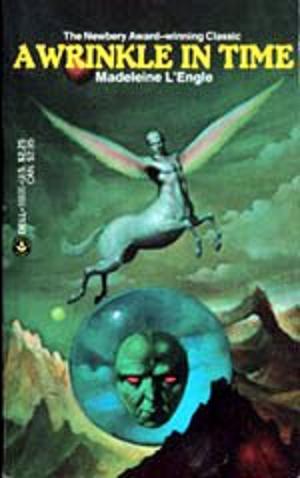
A Wrinkle in Time, by
Madeleine L'Engle
(first published in 1962)
Part II:

Diamond Theory in 1937
and
Geometry of the 4×4 Square
Part III:
Catholic Schools Sermon
Conclusion:
"Wells and trees were dedicated to saints. But the offerings at many wells and trees were to something other than the saint; had it not been so they would not have been, as we find they often were, forbidden. Within this double and intertwined life existed those other capacities, of which we know more now, but of which we still know little– clairvoyance, clairaudience, foresight, telepathy."
— Charles Williams, Witchcraft, Faber and Faber, London, 1941
Related material:
A New Yorker profile of Madeleine L'Engle from April 2004, which I found tonight online for the first time. For a related reflection on truth, stories, and values, see Saint's Day. For a wider context, see the Log24 entries of February 1-15, 2003 and February 1-15, 2006.
Comments Off on Friday May 12, 2006
Friday, May 5, 2006
Comments Off on Friday May 5, 2006
Friday, April 21, 2006
Department of Defense
(Found in Translation continued,
Lust und Freud continued, and
Here’s Donny continued)
“When a person has uncomfortable thoughts or feelings, they may project these onto other people, assigning the thoughts or feelings that they need to repress to a convenient alternative target….
Projection is one of Freud’s original defense mechanisms.”
— ChangingMinds.org
Comments Off on Friday April 21, 2006
Friday, April 14, 2006
Last Temptation:

Click on picture for details.
“Little Red Ridin’ Hood,
You sure are lookin’ good….”
See also today’s Log24
guestbook entries.
Comments Off on Friday April 14, 2006
Friday, April 7, 2006
Comments Off on Friday April 7, 2006
Comments Off on Friday April 7, 2006
Friday, March 31, 2006
Reason and Rhyme
"Philosophers ponder the idea of identity: what it is to give something a name on Monday and have it respond to that name on Friday…."
— Bernard Holland in
The New York Times
Monday, May 20, 1996
Related material:
"flower"

Birds, Beasts & Flowers
As performed by
Princess Grace of Monaco
Presented at
St James's Palace, London,
on 22nd November 1978
in the presence of Her Majesty,
Queen Elizabeth
The Queen Mother
Comments Off on Friday March 31, 2006
Friday, March 24, 2006
Women’s History Month continues…
Activity
From the New York Times on the First of May, 1999:
|
Combinatorics in higher mathematics is the study of permutations and combinations of elements in finite sets. In an interview with M.I.T. News last year, [Gian-Carlo Rota (pdf)] gave this definition of his field of study:
“Combinatorics is putting different-colored marbles in different-colored boxes, seeing how many ways you can divide them. I could rephrase it in Wall Street terms, but it’s really just about marbles and boxes, putting things in sets.”
Indeed, Dr. Rota added, some of his best students go to Wall Street. “It turns out that the best financial analysts are either mathematicians or theoretical physicists,” he said.
|
Rota graduated from
Princeton University in 1953.
Some may prefer the following
marbles and boxes:

Related material:
Oct. 21, 2002,
April 30, 2005.
Comments Off on Friday March 24, 2006
Comments Off on Friday March 24, 2006
Dreaming Game
A phrase from yesterday’s entry:
Lust und Freud.
This phrase, together with the concluding song from the recent film “Good Night and Good Luck,” suggests the following links (the first two from Sinatra’s birthday, 2004):
One For His Baby,
One More for the Road,
and LIFE in Camelot: The Kennedy Years.
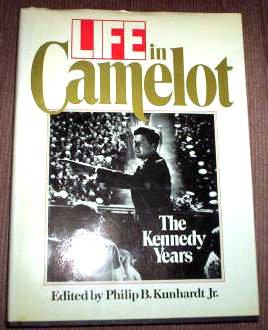
In this morning’s New York Times obituaries:
Philip B.Kunhardt Jr., editor of “LIFE in Camelot: The Kennedy Years.” Kunhardt was also the author of memoirs about his parents, My Father’s House and The Dreaming Game— the latter about his mother, herself the author of the classic Pat the Bunny. Kunhardt died on Tuesday.
Related material:
Tuesday’s Log24 entry The Kennedy School and yesterday’s entry Welcome to the Hotel Hassler.
“There were voices down the corridor,
I thought I heard them say…”
Comments Off on Friday March 24, 2006
Friday, March 17, 2006
Dogma in the
State of Grace
“Words and numbers are of equal value,
for, in the cloak of knowledge,
one is warp and the other woof.”
— The princesses Rhyme and Reason
in The Phantom Tollbooth,
by Norton Juster, 1961
(From a Sermon for
St. Patrick’s Day, 2001)
The Pennsylvania midday lottery
on St. Patrick’s Day, 2006:
618.
Reason informs us that the lottery result “618” may be regarded as naming
” – 0.618,” the approximate value of the negative solution to
the equation x2 – x – 1 = 0

Following the advice of Clint Eastwood (on the “Midnight in the Garden of Good and Evil”
soundtrack CD) to “accentuate the positive,” Reason notes that the other, positive, solution to this equation, approximately 1.618, a number symbolized by the Greek letter “phi,” occurs in the following geometric diagram illustrating a construction of the pentagon:

For further enlightenment, we turn to Rhyme, who informs us that “618” may also be regarded as naming the date “6/18.” Consulting our notes, we find on
6/18, 2003, a reference to “
claves,” Latin for “keys,” as in “
claves regni caelorum.”

Alicia Keys
“… it’s going to be
accomplished in steps,
this establishment
of the Talented in
the scheme of things.”
— Anne McCaffrey,
Radcliffe ’47,
To Ride Pegasus
Comments Off on Friday March 17, 2006
Friday, March 10, 2006
Women’s History Month continues…
Raiders of the Lost
Comments Off on Friday March 10, 2006
Friday, March 3, 2006
Found in Translation
From “Space, Time, and Scarlett”
(Log24, Feb. 9):
Google’s “sunlit paradigm” and
my own “Lost in Translation.”
Comments Off on Friday March 3, 2006
Women's History Month continues.
Global and Local:
One Small Step
Audrey Terras, University of Maryland '64:
We cannot discuss the proof here as it requires some knowledge of zeta functions of curves over finite fields.
Charles Small, Harvard '64:
The moral is that the zeta function exhibits a subtle connection between the "global" (topological, characteristic 0) nature of the curve and its "local" (diophantine, characteristic p for all but finitely many "bad" primes p) behaviour. The full extent of this connection only becomes apparent in the context of varieties more general than curves….

"Some friends of mine
are in this band…."
— David Auburn, "Proof"
"Women and Mathematics
is a joint program of
the Institute for Advanced Study
and Princeton University."
— School of Mathematics,
1 Einstein Drive,
Princeton, New Jersey
Comments Off on Friday March 3, 2006
Friday, February 24, 2006
Final Club
For the feast of St. Matthias
(traditional calendar)–
from Amazon.com, a quoted Library Journal review of Geoffrey Wolff‘s novel The Final Club:
“‘What other colleges call fraternities, Princeton calls Eating Clubs. The Final Club is a group of 12 Princeton seniors in 1958 who make their own, distinctive club….
Young adults may find this interesting, but older readers need not join The Final Club.’
— Previewed in Prepub Alert, Library Journal 5/1/90. Paul E. Hutchison, Fisherman’s Paradise, Bellefonte, Pa. Copyright 1990 Reed Business Information, Inc.”
From The Archivist, by Martha Cooley:
“Although I’ve always been called Matt, my first name isn’t Matthew but Matthias: after the disciple who replaced Judas Iscariot. By the time I was four, I knew a great deal about my namesake. More than once my mother read to me, from the New Testament, the story of how Matthias had been chosen by lot to take the place of dreadful Judas. Listening, I felt a large and frightened sympathy for my predecessor. No doubt a dark aura hung over Judas’s chair– something like the pervasive, bitter odor of Pall Malls in my father’s corner of the sofa.
As far as my mother was concerned, the lot of Matthias was the unquestionable outcome of an activity that seemed capricious to me: a stone-toss by the disciples. I tried with difficulty to picture a dozen men dressed in dust-colored robes and sandals, playing a child’s game. One of the Twelve had to carry on, my mother explained, after Judas had perpetrated his evil. The seat couldn’t be left empty. Hence Matthias: the Lord’s servants had pitched their stones, and his had traveled the farthest.”
Comments Off on Friday February 24, 2006
Friday, February 17, 2006
Raiders of the Lost…
(continued)
“‘Tony Rome’ is flavored with enough in-jokes to make any Sinatra fan smile– Frank sleeping in his office underneath a copy of the
Jewish Daily Forward; confronting a lady who needs help finding her ‘lost pussy’….”
— Tony Rome
Comments Off on Friday February 17, 2006
Role Model
The adventures of Harvard president Larry Summers continue
in today’s Crimson:
At the most vulnerable juncture of his half-decade at Harvard’s helm, Summers now faces a fuming Faculty with few vocal supporters by his side.
And many of his longtime allies are expressing disaffection with what they see as the president’s ineffective leadership.
“If he’s going to be like every other college president– just a caretaker, fundraiser, and a mouther of platitudes– then why do we need someone who’s also going to offend people?” said psychologist Steven Pinker, who was one of Summers’ most prominent supporters last year….
Pinker, while saying he wasn’t sure if the Corporation should take any public steps, said he hoped the board would, at least, intervene privately with the president.
“I would like them to give some guidance to Summers and to say, ‘Things aren’t going well. You’ve got to either bring back some leadership and make sure that trains run on time and start new initiatives that you originally wanted to bring– or else get out of the way,'” Pinker said.
— Anton S. Troianovski

Who’ll be my role model
Now that my role model is
Gone, gone?
— Paul Simon
Comments Off on Friday February 17, 2006
Friday, February 10, 2006
Russian Gold
From today’s Harvard Crimson:
‘Tawdry Shleifer Affair’
Stokes Faculty Anger
Toward Summers
“The 18,000-word article, ‘How Harvard Lost Russia,’ by investigative journalist David McClintick ’62, is
a copious narrative of the activities of the Harvard Institute for International Development (HIID) in advising the Russian government….”
A case for Joseph Finder…
or for Steve Martin?
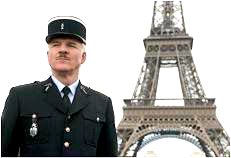
Comments Off on Friday February 10, 2006
In memory of Akira Ifukube (pdf), composer of music for “Godzilla,” who died on Wednesday, Feb. 8, 2006… birthday of John “Star Wars” Williams–
Comments Off on Friday February 10, 2006
Friday, February 3, 2006
Washington Ballet

“At the still point…“
Related material:
Log 24, Sunday, January 29, 2006,
and links in the previous entry–
A Contrapuntal Theme and
Good Will Writing.
|
Beauty is momentary in the mind–
The fitful tracing of a portal;
But in the flesh it is immortal.
The body dies; the body’s beauty lives.
So evenings die, in their green going,
A wave, interminably flowing.
So gardens die, their meek breath scenting
The cowl of winter, done repenting.
So maidens die, to the auroral
Celebration of a maiden’s choral.
— Wallace Stevens,
“Peter Quince at the Clavier”
|
Comments Off on Friday February 3, 2006
Friday, January 27, 2006
Mozart, 2006
Mozart, 1935
Poet, be seated at the piano.
Play the present, its hoo-hoo-hoo,
Its shoo-shoo-shoo, its ric-a-nic,
Its envious cachinnation.
If they throw stones upon the roof
While you practice arpeggios,
It is because they carry down the stairs
A body in rags.
Be seated at the piano.
That lucid souvenir of the past,
The divertimento;
That airy dream of the future,
The unclouded concerto . . .
The snow is falling.
Strike the piercing chord.
Be thou the voice,
Not you. Be thou, be thou
The voice of angry fear,
The voice of this besieging pain.
Be thou that wintry sound
As of the great wind howling,
By which sorrow is released,
Dismissed, absolved
In a starry placating.
We may return to Mozart.
He was young, and we, we are old.
The snow is falling
And the streets are full of cries.
Be seated, thou.
— Wallace Stevens, Ideas of Order (1936)
From the center:
“‘Mozart, 1935’ immediately discloses a will to counter complaints of pure poetry, to refute that charge heard regularly from Stevens’s critics, to find ‘his particular celebration out of tune today’ on his own if necessary; and, in short, to meet the communist [poet and critic Willard] Maas’s ‘respect for his magnificent rhetoric’ at least halfway across from right to left.”
— Alan Filreis, Modernism from Right to Left: Wallace Stevens, the Thirties, and Literary Radicalism (Cambridge: Cambridge University Press, 1994), p. 211
From the left:
Norman Lebrecht on this year’s celebration of the 250th anniversary of Mozart’s birth (January 27, 1756):
“… Mozart, it is safe to say, failed to take music one step forward….
… Mozart merely filled the space between staves with chords that he knew would gratify a pampered audience. He was a provider of easy listening, a progenitor of Muzak….
… He lacked the rage of justice that pushed Beethoven into isolation, or any urge to change the world. Mozart wrote a little night music for the ancien regime. He was not so much reactionary as regressive….
… Little in such a mediocre life gives cause for celebration….
… The bandwaggon of Mozart commemorations was invented by the Nazis in 1941….
… In this orgy of simple-mindedness, the concurrent centenary of Dmitri Shostakovich– a composer of true courage and historical significance– is being shunted to the sidelines, celebrated by the few.
Mozart is a menace to musical progress, a relic of rituals that were losing relevance in his own time and are meaningless to ours. Beyond a superficial beauty and structural certainty, Mozart has nothing to give to mind or spirit in the 21st century. Let him rest. Ignore the commercial onslaught. Play the Leningrad Symphony. Listen to music that matters.”
The left seems little changed since 1935.
Friday, January 20, 2006
Fourstone Parable
"Wherefore let it hardly… be… thought that the prisoner… was at his best a onestone parable…
for… pathetically few… cared… to doubt… the canonicity of his existence as a tesseract."
— Finnegans Wake, page 100, abridged
"… we have forgotten that we were angels and painted ourselves into a corner
of resource extraction and commodification of ourselves."
— A discussion, in a draft of a paper (rtf) attributed to Josh Schultz,
of the poem "Diamond" by Attila Jozsef
Commodification of
the name Cullinane:
See the logos at
cullinane.com,
a design firm with
the motto

(Note the 4Cs theme.)
To adapt a phrase from
Finnegans Wake, the
"fourstone parable" below
is an attempt to
decommodify my name.
Fourstone Parable:

(See also yesterday's "Logos."
The "communicate" logo is taken from
an online library at Calvin College;
the "connect" logo is a commonly
available picture of a tesseract
(Coxeter, Regular Polytopes, p. 123),
and the other two logos
are more or less original.)
For a more elegant
four-diamond figure, see
Jung and the Imago Dei.
Comments Off on Friday January 20, 2006
Friday, January 6, 2006
Cross
Today's birthday:
E. L. Doctorow, author of
City of God
"In the garden of Adding,
Live Even and Odd"
— City of God

Adapted from
Ad Reinhardt
"… I don't write exclusively on Jewish themes or about Jewish characters. My collection of short stories, Strange Attractors, contained nine pieces, five of which were, to some degree, Jewish, and this ratio has provided me with a precise mathematical answer (for me, still the best kind of answer) to the question of whether I am a Jewish writer. I am five-ninths a Jewish writer."
For related remarks,
click on the cross.
Comments Off on Friday January 6, 2006
Epiphany

“A related epiphanic question, second only in interest to the question of the nature of epiphany, is how Joyce came by the term. The religious implications would have been obvious to Joyce: no Irish Catholic child could fail to hear of and to understand the name of the liturgical feast celebrated on January 6. But why does Joyce appropriate the term for his literary theory? Oliver St. John Gogarty (the prototype of the Buck Mulligan of Ulysses)… has this to say: ‘Probably Father Darlington had taught him, as an aside in his Latin class– for Joyce knew no Greek– that ‘Epiphany’ meant ‘a shining forth.'”
— William T. Noon, Society of Jesus,
Chapter 4 of Joyce and Aquinas,
Yale University Press, 1957
Epigraphs to The Shining, by Stephen King:

For more about shining, click on the star.
Comments Off on Friday January 6, 2006
Friday, December 30, 2005
Comments Off on Friday December 30, 2005
Comments Off on Friday December 30, 2005
Expression
Expression is an impossible word.
If you want to use it
I think you have to
explain it further…
— Ad Reinhardt,
Art as Art
“… an equation is a very
abstract expression
of knowledge
about something.”
— The Hidden Side
of Visualization
Well, yes.
For example:

Abstract Expression,
pixels on screen, 12/30/05
“… an assumption I wish to reject, namely, that in quotation an abstract expression (shape) is denoted….
Since Davidson, however, only says ‘we may take [an expression] to be an abstract shape’ [1979, p.85, my emphasis], his theory is compatible with expressions being something else. We need only find something that can be instantiated by radically differently shaped objects. Whatever it is must be such that written tokens, spoken tokens, signed tokens, Braille tokens, Semaphore tokens, finger language tokens, and any other way in which words can be produced, can be instantiated by it….
Such entities might  exist; if they do, they might ultimately play some role in the metaphysics of language.” exist; if they do, they might ultimately play some role in the metaphysics of language.”
 My emphasis. My emphasis.
Reference:
Davidson, D., 1979, “Quotation,” in Inquiries into Truth and Interpretation , Oxford, Oxford University Press, 1984, pp.79-92.
|
For more on zero and other entities,
see Is Nothing Sacred?
For more on Davidson,
see Shema .
Comments Off on Friday December 30, 2005
« Newer Posts —
Older Posts »


















































































































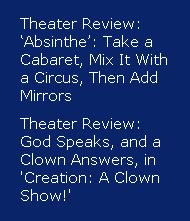








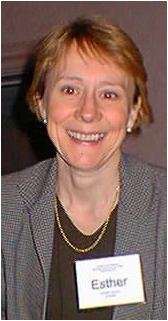















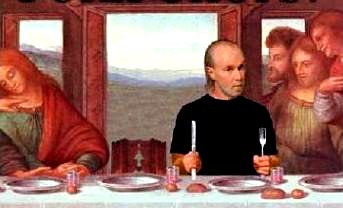



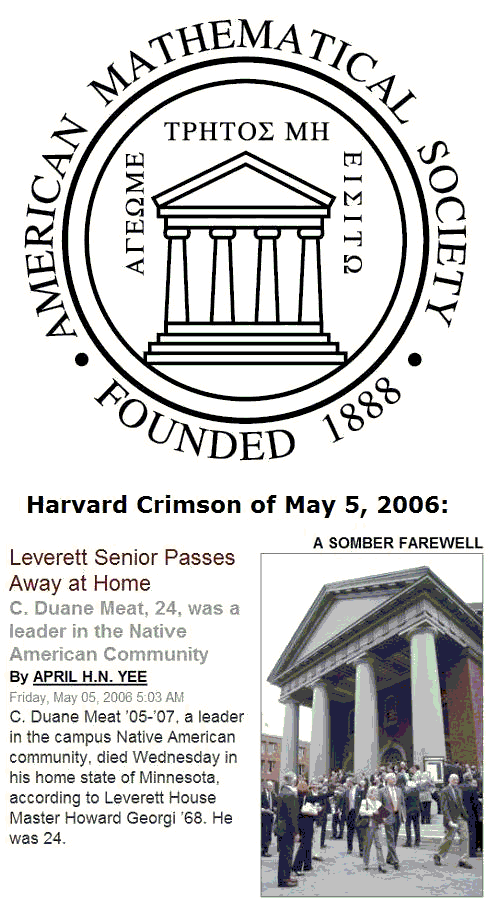



























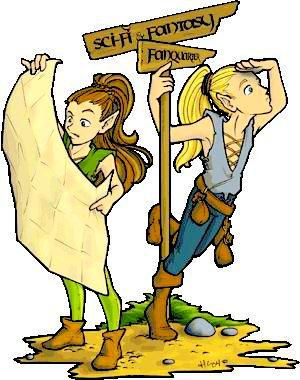

 exist; if they do, they might ultimately play some role in the metaphysics of language.”
exist; if they do, they might ultimately play some role in the metaphysics of language.”